
Find anything, super fast.
- Destinations
- Documentaries

New Zealand
Possessing an intense beauty mirrored in tranquil mountains and raging rivers, New Zealand is one of the most breathtakingly scenic yachting destinations in the southern hemisphere. Mesmerizing glaciers, bubbling mud pools and soft golden beaches are all there to be discovered alongside one of the world’s premier wine and food scenes.
The cruising grounds of New Zealand are split into the North and South Islands; varying in landscape and atmosphere but united in a pure sense of natural wonderment. The south is the most scenic and mountainous of the two, with a breathtaking range of jagged Alps running the length of the island. The north is somewhat of a quieter and more relaxed holiday destination with a strong yachting history.
Auckland The picturesque city of Auckland is famous for its exceptional international sailing connections, hosting a collection of first class regattas and superb marinas. The ‘City of Sails’ is the enchanting base for sailing the Hauraki Gulf and the Coromandel Peninsula, two equally captivating cruising grounds in their own right.
Hauraki Gulf and The Coromandel The Hauraki Gulf is an island-sprinkled, smooth-water paradise boasting gorgeous landscapes swathed in scarlet flowers, glowing beaches, sprawling vineyards and seaside villages that are a delight to explore. The Coromandel is dotted with sublime beaches and hidden bays that make for perfect anchorage points.
The Bay of Islands Further north, The Bay of Islands is traditionally New Zealand’s yachting centre, boasting an extraordinary protected bay and hundreds of secluded islands offering the perfect secluded escape. Characterised by unbelievably green hills rolling down onto silky soft sands, the cool waters are simply bursting with incredible marine life, where marlin, dolphins and seals can be seen right from the deck.
Marlborough Sounds For a more peaceful and secluded twist, head to one of New Zealand’s most internationally renowned areas in Marlborough Sounds. An absolute yachting heaven, the exquisite waters of Marlborough are equally matched by their onshore delights, boasting sheltered bays, glistening beaches, hidden caves and exhilarating bushwalks. World-renowned for its exquisite wines, the region is the perfect place to sample some of the world’s best Sauvignon Blanc.
Fiordland Words can not do justice to the natural wonder that awaits in the Fiordland on New Zealand’s remote south-west coast. Nothing short of spectacular, ethereal landscapes rise up majestically from the strikingly calm waters; a flowing combination of snow-capped mountains, rolling hills, tumbling waterfalls and fascinating wildlife.
Queenstown Onshore, there are endless outdoor pursuits on offer, from cycling and canoeing to walking and four-wheel driving. Inland on the South Island is the famous adventure capital of Queenstown, offering a dizzying range of unique and off-beat activities to satisfy even the most hardened thrill-seeker.

Lost your password?
Create an account

Grace under sail
New Zealand’s reputation in the field of yacht design, construction and racing is second to none. Since Chris Bouzaid hoisted the one One Ton Cup aloft in 1969, the country’s yachting fraternity has not looked back. But to do so—examine the sport’s earliest years—is to be reminded that today’s greater heritage, with roots in the very foundation of the settlement we now call the City of Sails. Rawene, 42 feet long and the last of the big keel yachts built by the boatbuilding dynasty founded by Robert Logan, is part of that heritage, yet she still slices through the waves of Auckland’s Waitemata Harbour more than 90 years after she first tasted salt water on Christmas Eve 1908. Having undergone a recent overhaul, she is good for another 90 years.
Written by Vaughan Yarwood Photographed by Paul Gilbert and Hamish Ross

The latch lifts with a satisfying chink and the old front gate swings wide. I step through, walk around the villa to the back garden and stride down the steep Z of the path to the boathouse. The midmorning sun beats on clipped grass and dazzles on the small chop of the bay. Across the water the flamboyant pink buildings of the Chelsea Sugar refinery stand out against tree-clad hills, while out beyond the pohutukawa traffic climbs the coathanger of the harbour bridge.
A couple of lads sit on the lawn talking, beside a sprawl of ropes and gear. Then the skipper, Russell Brooke, arrives and we all head through the boathouse to the jetty. Under the iron roof, opposite a cluttered workbench, sits an ancient undecked clinker boat, maybe four metres long, built for the nephew of the painter Charles Goldie. It is draped with a dustcloth, its spars slung from a bare wooden wall. Over the past half-century, I am told, it has barely budged—in recent years just once, to add a decorative note to a television commercial.
But if the past seems frozen here in this shrine to nautical tinkering, it is exuberantly alive a few hundred metres offshore, out near Watchman Island. There, in the green bounce of the Waitemata, the 42-foot gaff-rigged cutter Rawene bucks impatiently on her mooring.
I had been told that Rawene, built in Auckland in 1908 by the revered boatbuilders Logan Bros, and newly restored, was the most authentic Edwardian yacht on the harbour. Now, thanks to the generosity of Brooke, her self-styled caretaker, I am about to see her put through her paces.
As we draw close, the yacht’s elegance comes into focus. There are, of course, the wonderful lines of the hull, which curve from the bowsprit and spoon bow down through the low waist and back to a nicely judged counterstern. Then there are the fetching shipboard details: the almond-shaped ellipses of the windows, two to a side; the timber bracket cradling the lashed boom; the wooden cockpit grating; varnished blocks for the running gear; belaying pins; her name, etched in the glass of the teak skylight.
Down below, amid the paint-fresh panelling, work is yet to be done. Benches where new crimson plush upholstery will lie are a clutter of tools and ropes. Even so, the restrained end result is readily imagined. Already the bevelled mirrors are on the cupboard doors and the wall mouldings gleam white. With the cushions in place, and with a few panel lines picked out in gold, Rawene’s cabin will take on a salon refinement.

On deck, while wind soughs through the rigging and the crew stow covers, sort rigging and attend to the thousand other things that preface the movement of a ship under sail, Brooke bends to his job in hand—splicing a rope to fasten the tack of the jib to the deck. “Sort of thing you really need to do in the evening,” he murmurs apologetically. Rawene, however, has found other ways to fill his evenings. This is to be her first outing for three years and the first ever with newfangled synthetic sails—the originals had been hand-stitched Egyptian cotton, one still unused.
Apart from the modern sailcloth, Rawene’s makeover has drawn on traditional materials and techniques. In such matters Brooke, education officer at the National Maritime Museum, is a stickler for authenticity.
“He has had us do everything the way it was done in granddad’s day,” says crew member Anthony Harland with mock disdain. “There is tallow to go down the rudder post yet, to lubricate it. You are supposed to heat it up to make it less viscous.” He draws down the corners of his mouth at the thought. “That is not a good time to be around.”
Brooke can’t help making comparisons with today’s craft. Take the turnbuckles, the rigging screws that attach the standing rigging to the chainplates on the hull. On Rawene they are hefty bronze pieces. “Worth a fortune, I would think. The modern stainless ones quickly start to bleed rust and look miserable.”
Concessions have been made, though, over the years. The first was an engine, installed to make docking easier when the yacht had a marina berth. Then came the synthetic sails and running gear. “When we had Manila ropes, things would break and, crash, down they’d come,” says Brooke.
With their low freeboard and big sails, early yachts have a reputation for being wet ships but, once under way, Rawene is comparatively dry. And quick. The skipper has set main, staysail and jib, but not gaff topsail, and in the 15-knot breeze we are burying the rail. The deep cockpit drains into the cabin. When Rawene cruises off the coast in a following sea, the drainholes are stopped up, the cabin hatch is closed and, says Brooke, “We bail like hell.”

With the rig taking the attention of her crew, fortune smiles on me. A pair of hands at the helm would appear to be required and I quickly volunteer mine. The boat is responsive, I find, and when the sails are trimmed, surprisingly well balanced. There is no need to wrestle brutishly with the tiller; the same delicate pressure that suffices to turn a bicycle on dry land will now send tons of kauri vessel prancing off on a new bearing.
Another sail, the leader, is got up, and we rocket downharbour. Foam peels from the prow and the bowsprit flexes as new load comes on.
With no winches and only blocks and tackle to haul the sheets, Rawene at times gives her crew a workout. Five are needed for racing, two in the cockpit and two forward. To keep the workspace clear, the helmsman lies across the deck aft with tiller in hand, his feet braced on nifty wooden rails.
Heeling over in the freshening wind, a greater length of boat meets the sea, and with the waterline increased she reaches her optimum speed. I have heard seasoned sailors talk of these old yachts as being “sea-kindly” and now I see what they mean.
Slender and deep-keeled, they slice through the water with none of the rockinghorse motion of modern light-displacement boats. The ride is smooth. Close to the water, yes. And wet, when the bow clips a wave. But with a pared-down, clean-cut ride that is hugely enjoyable.
I notice the rudder post carries, alongside the ship’s name, the date 1909. Brooke surmises that, having cast the date in bronze, the original owner, Alfred Gifford, a well-known Auckland tailor, prevailed on the builders to get her finished early. At any rate, come Boxing Day 1908, Gifford was making for the cruising grounds of the Hauraki Gulf.
And who could blame him?

The Edwardians, with much of the hard work of city-building behind them, were abandoning the austerity and reserve of their Victorian forebears and seizing on new opportunities for leisure. They raced horses, visited beaches and picnicked with enthusiasm. And they took to yachting. At least the menfolk did. The unseemly lack of privacy aboard, and the want of even such basic necessities as a toilet, discouraged women from anything other than day sailing. It wasn’t until the advent of reliable marine engines and the consequent building of sizeable pleasure launches that women were regularly to be found at sea.
Meanwhile, in what became the traditional voyaging seasons of Christmas and Easter, all-male yacht crews slipped their moorings and headed for Kawau, Great Barrier, the Bay of Islands and other exotic destinations.
“On Thursday evening, Auckland Harbour presented one of the prettiest sights imaginable,” announced the New Zealand Yachtsman, reporting on a typical exodus in April 1910. “The big bright Easter moon looked down on a scene of serene splendour, and the various craft crossing her silvery path on the gently rippling waters resembled phantom wraiths gliding slowly and silently out and away into the great unknown.”
With its romantic disposition and boundless enthusiasm, the New Zealand Yachtsman, begun in 1909 by yachting devotee Wilkie Wilkinson, was the perfect yachting showcase, and did much to champion the sport. Week after week, between its stylish art nouveau covers, the journal carried detailed accounts of the Auckland fleet’s adventures—and its mishaps.
As Brooke was to discover years later, the gear on these boats needed treating with respect, and breakages were common. One of the more spectacular, involving the 45-foot snapper boat Little Jim, occurred at the end of 1933. Setting off from Great Barrier for Kawau on Christmas Day—they had to be back for work between Boxing Day and New Year—Little Jim’s crew found themselves punching into a freshening gale with reefed mainsail. Then, without warning, the mast snapped (the same fate had befallen an earlier mast just the year before).
Labouring in the teeth of the gale, the crew cut away the rigging with a breadknife and cobbled together a jury rig, only to find the mainsail had snagged on the rudder and was acting like an enormous sea anchor.

In danger of being dashed to pieces against the rocks of Great Barrier, they dropped two anchors. One warp parted in the huge seas and the remaining anchor dragged.
That was the end of Little Jim. She broke up in Katherine Bay, and the crew scrambled ashore with what few possessions they could salvage. They built a fire to dry out and found some bacon among the wreckage washed ashore. So, that was Christmas dinner sorted, at any rate. Barbecued bacon on a manuka fire.
Despite such catastrophes, enthusiasm for sailing couldn’t have been hard to muster, however. Not when living on the doorstep of one of the world’s great cruising grounds. Yachtsmen and launch owners headed for Piako Swamp and Port Charles at the start of the shooting season to bag pheasants and pigeons. They hauled up massive snapper in prime fishing spots and soaked weary limbs in the hot pools at Waiwera, called at picturesque bays and yarned with locals, made sightseeing excursions and took up invitations to hastily improvised dances ashore.
Many a crew stowed a gramophone for lively shipboard entertainment, along with fishing tackle and copious quantities of food—the new vogue for recreational sailing could make demands on a person.
“Most of our yachtsmen have been unknown to Auckland for the last week or so, having gone away to one or other of the lovely little spots round our harbour,” reported the Evening Star newspaper just before the turn of the century. “They may be discovered in one of the hundred little bays round the islands, ‘with nuddings on,’ or only an old shirt and a pair of inexpressibles, boiling the billy or eating roast pipis. They never shave now, nor do they comb their hair. They have gone back to savage life, and are tasting the enjoyment of natural man.”
One favoured destination, Kawau Island, had been giving a warm reception to yacht crews since the days of its former owner, Sir George Grey. In January 1888, the 45-foot cutter Rita anchored at the island and basked in the governor’s hospitality. Built in 1882 for Tom Henderson, Rita had been the first Auckland yacht to head north for pleasure, and with Henderson at the helm began the tradition of long, often ambitious, summer voyages. During the season of the 1888 cruise, she logged an impressive 2134 miles.

At Kawau, some of the ship’s party rowed ashore to shoot wallabies and peafowl, while the captain went to call on Sir George. The genial statesman invited the visitors to dinner and told them to help themselves to mulberries, figs and apricots in the orchard. Several days later, Rita returned to Mansion House Bay for a day sail with half a dozen guests from Waiwera. They took tea under the massive Kaffir boom—still there more than a century later—and during the return to Waiwera dined on tea and hot toast with Kawau honey.
“Oh, the whole day was a red-letter one in my existence,” wrote one of Rita’s contented passengers. “Indeed, so was every one on that splendid trip.”
There could have been few gifts more appreciated in the days before air travel brought the South Pacific within reach of city dwellers than the offer of a Gulf adventure—even if just for a day.
But if the Edwardians bequeathed a golden age of yachting, sailing for pleasure had been part of the Waitemata literally from the day Auckland was founded.
[chapter-break]
One September 18, 1840, at one o’clock in the afternoon, Captain William Hobson and his party, freshly arrived from the Bay of Islands, landed at Point Britomart, where they raised the Union Jack to a thunderous 21-gun salute, thus putting an official stamp on the fledgling settlement. That done, they drank the Queen’s health and retired to the Anna Watson for lunch. Later in the day, to liven things up, a regatta was held. A couple of gigs raced each other, then two whaleboats competed for five pounds in prize money. Finally, two big Maori canoes got caught up in the excitement and had a contest.
Ten years later, the New Zealander editorialised: “In our commemorative festivals, whatever our equine predilections, in a maritime colony of the greatest maritime nation the world ever saw, we are of the opinion that a Regatta would be a much more national and appropriate sport [than horse racing].”
That opinion took concrete form on Wednesday January 30, 1850, when the first of Auckland’s long-running Anniversary Day regattas was held. There were few entries and no wind, but the day was retrieved by some fine Maori canoe races.

A scarcity of yachts meant that for many years off-duty workboats—trading schooners and cutters, fishing boats and, later, scows—were the main competitors at the annual regattas. But by the 1880s, recreational boats were starting to appear, and yacht racing, the country’s pioneer sport, was attracting serious wagers and spectators by the thousand.
It is a curious thing, the way fishing boats evolved into racing boats and keel cruisers from the 1870s on, while old, outclassed racing yachts were bought and pressed into service by fishers. This nautical to and fro is most evident with the mullet boats.
Mulleties, which measured anything from 22 to 28 feet in length, were built for netting in the tidal upper reaches of the Waitemata, though they also proved useful for dredging mussels in the Firth of Thames and elsewhere. Shallow drafted (two feet), and with a retractable centreboard, they had a wide-tucked stern to make lifting the catch easier and a covered foredeck to make overnighting in distant bays more bearable. They were also manoeuvrable and could make eight or nine knots—the catch had to be got to the Auckland wharves before it deteriorated.
Not surprisingly, these nimble boats soon caught the attention of yachties, who bought them as pleasure craft and later ordered purpose-built mulleties for racing and cruising. A few design restrictions were developed to prevent the class degenerating into “unwholesome racing machines,” and the boats are still sailed today on the harbour, chiefly out of the Ponsonby Cruising Club.
Mullet-boat owners are proud of the boats’ working-class origins, and of their reputation for pushing themselves and their craft to the limit. This spirit is symbolised by their most coveted trophy, the Lipton Cup—an impressive piece of silverware donated in 1922 by the English tea baron Sir Thomas Lipton, who, in a long life, had himself accumulated a swag of prizes.

How the cup came to be in Auckland is the subject of an enduring piece of nautical lore. After the First World War, goes the story, the mullet lads, feeling the need for a worthy grail to fight over, clad themselves in formal yachting whites (to which they were not accustomed), caught the cross-harbour ferry to Devonport and had their picture snapped outside the imposing Esplanade Hotel. This photograph of their “clubhouse” was despatched to Sir Thomas along with an engaging plea, and, in due course, back came the cup.
Mullet boats are not without their disadvantages. Even with a large crew (up to six) they are hard to handle in boisterous conditions, and have been known to defy all attempts at control and just bolt away. In such a shallow-draught boat, the cabin is a miserable four feet high, and cruising in one has been likened to “spending a weekend under the dining room table.” Yet, despite these drawbacks, some consider the mullet boat to be New Zealand’s most distinctive contribution to marine design.
Mulleties were not the only fishing boats adopted by yachtsmen. A similar thing happened with snapper boats—large, fast, high-performance keelers used for line fishing out in the Hauraki Gulf. Like mullet boats, they eventually suffered as work craft with the arrival of motor trawlers.
A new era in New Zealand shipbuilding was signalled with the arrival of Scottish designer Robert Logan in 1874. Fresh from the Clyde—the Silicon Valley of yacht design—it was natural that he should settle in Auckland. At a time when the country’s interior was largely roadless, the settlement was a centre of coastal trade as well as the main New Zealand port for schooners servicing the South Pacific, and it enjoyed ready access to one of the world’s finest boatbuilding timbers, kauri. To clinch the matter, Auckland had a mild climate and an established boatbuilding infrastructure, and it lay at the entrance to a yachtsman’s paradise, the Hauraki Gulf.
Another talented boatbuilder, Auckland-born Charles Bailey, had two years earlier established himself in Devonport, where Logan set up his own yard, and a healthy rivalry soon developed between the two. Both men had sons who followed their father’s trade, and their names and boats dominated the sport of yachting for 60 years.
While each built a range of craft, from dinghies and small open boats to island traders and increasingly, after 1905, motor vessels, it was the yachts that established their reputations and that regularly brought them head to head on the water.

The 28-foot centreboard yacht Jessie Logan was one of Robert Logan’s early creations, and the one that forged his reputation. Named for his first daughter and built for the 1880 Auckland Anniversary Regatta, the boat was a phenomenon, winning 13 firsts and two seconds from 15 starts in her first year alone.
Like many boatbuilders, Logan often built craft “on spec,” without a prior order. Sometimes builders would engage a skipper to race a new boat for a season. If the boat did well, it would enhance the builder’s reputation. This was the case with Jessie Logan, and before the next season Logan raffled her off.
The winning £1 ticket was held by a timber-mill clerk, James Ansenne. Aided by Logan and a number of crack skippers, Ansenne and Jessie Logan kept the challengers at bay, though many boats were purpose-built to beat her. She was widely considered to be the most beautiful and fastest craft of her time. Such was her stranglehold on races that yachting Auckland breathed a collective sigh of relief when she was eventually sold to a new owner in Wellington.
Following the success of Jessie Logan, Logan built Daisy, Magic, Christina, Arawa, Muritai, Tawera, Aorere and others in quick succession.
At about the same time, the Bailey yard was turning out its own well-regarded yachts, including Calypso, Alfred, Daphne, Thetis, Rita, Pet, Sis, Bud, Imp, Toy, Sinking Fund, Rep, Minerva Rogue and the mullet racers Manola and Welcome Jack. Most were in the 20-30 foot range.
In 1883 came the match of the thoroughbreds, when Toy raced Jessie Logan, and half of Auckland placed wagers on the outcome. After a great duel across 30 miles of harbour, Toy won by 90 seconds.

In 1888, Logan decided to build a yacht to carry his name further afield by challenging the Australians on their home turf. The occasion was a Melbourne regatta to celebrate the centenary of British settlement in Australia, and for it he designed the cutter Akarana.
Three yachts had already been exported to Australia, raising the reputation of New Zealand builders there: the cutters Secret and Waitangi, built by Tom Niccol, and Charles Bailey Sr’s Erin. Akarana’s arrival in Melbourne was therefore greeted with a great deal of interest and speculation. To save money and watch over the boat, Logan lived in Akarana’s narrow cabin with Auckland sailor Jack Bell while he recruited an amateur crew of expatriates and got to know the harbour.
The regatta, hailed as the biggest in the Southern Hemisphere, turned out to be a fine showcase and a splendid chance for an entrepreneur such as Logan to make money. “I question whether an equal sum has been offered in any part of the world,” crowed Melbourne’s Leader newspaper of the collective prize kitty.
On the first day of competition Akarana beat the fleet in her division, taking the £130 prize—she had cost £500 to build. The choppy conditions of day two suited her less well, however, and Logan was beaten. The following January he travelled to Sydney, where he won the National Regatta and £20 in prize money.
After some difficulty, Akarana was then sold to a local chemist for cruising, and Logan returned to Auckland. He built no more boats for the Australian market, but his boldness in crossing the Tasman earned him new commissions, including one from Wellington’s Alexander Turnbull.
Logan’s sons had fewer scruples about heading back across the Tasman, and by the turn of the century the yachts of Logan Bros were regularly crowding the Australian prize tables. The Baileys also enjoyed racing success and full order books. By 1902, of the eleven 30-foot linear raters racing in Sydney, seven were from the Bailey and Logan yards.

In 1898, the Logans produced Rainbow, a fast 50-foot cruiser, constructed in their trademark triple-planked diagonal kauri with copper fastenings throughout. She was the first local boat designed according to new concepts first seen on the Prince of Wales’ revolutionary yacht Britannia, launched in 1893.
Rainbow immediately outclassed all local competition, and her owner then took her to Australia, where she enjoyed similar success, despite an alleged attempt to ram her during a race. In 1902, she returned to New Zealand and was later altered for cruising. But, like many Logan boats, her racing life was far from over. In 1937, new owners changed her sail arrangement to better suit her for racing, and she competed effectively with modern First Division craft such as the much newer Ranger. In the late 1940s, Leo Bouzaid, a well-known Auckland sail-maker, purchased her and again refurnished her for racing, changing to a Bermuda rig (a triangular mainsail with no gaff). She continued to win races, and is still sailing in the South Island today.
Chris Bouzaid, Leo’s son, named his famous One Ton Cup-winning yacht Rainbow II in honour of his father’s old thoroughbred, and it was this new Rainbow that first brought New Zealand to the forefront of international yachting, on July 21, 1969—portentously, perhaps, the day of the first moon landing.
Other famous and long-lived Logan boats whose names even now can soften the countenance of old salts and bring a dreamy glaze to their eyes include Moana (built for Willie Wilson, proprietor of the New Zealand Herald, in 1895), Ariki (1904) and Rawhiti (1905). In 1910, the Logans ceased building yachts, although Arch Logan, one of Robert’s sons, continued to design them for some years.
The fame achieved by the Logans’ rivals, Charles and Walter Bailey, was no less stellar. In the early 1900s, the Baileys constructed the 30-foot Meteor, and the boat proved aptly named. Sydney boasted a yacht of similar size, Bronzewing, which had beaten all the Port Jackson locals, and which the Australians considered invincible. A visiting Australian yachtie suggested an intercolonial competition, and Meteor was promptly dispatched to Sydney. Despite the fact that Bronzewing was upgraded for the encounter in every possible way, Meteor still trounced her.
La Carabine was a 60-ton schooner commissioned from Charles Bailey Jr by Sir Rupert Clark, a wealthy Victorian sportsman, in 1903, after a worldwide search for a superior design of yacht. He was delighted with the finished vessel, and later ordered another substantial yacht from Baileys.
The Bailey yard also made a number of larger commercial vessels for use around the Pacific, including Stratbcona, a 110-foot auxiliary schooner built in 1915 for the Pacific Cable Board. By all accounts, she was the acme of perfection in design and build, the fastest vessel of the era ever to leave Auckland under sail. Capable of 15 knots or more, she was so perfectly balanced that a boy could steer her.

A crowning achievement for Charles Bailey Sr came in 1893, when, shortly before retiring, he was commissioned by the wealthy Bloomfield brothers to build a cutter, the only condition being that his son draw out the ship’s lines. Charles Sr had never learned draughting, and, like many contemporaries, worked by sight from small-scale, wooden half-models.
The 64-foot vessel, beautifully finished with black topsides, gold scrolls and sheerstrake ribbon, striking figurehead and copper-sheathed hull, was called Viking. She was built in the surprisingly short space of 16 weeks—such was the strength of the Bailey yard—and for more than 40 years was New Zealand’s biggest yacht and a symbol of old-world beauty.
Designers of the day, including not just the Baileys and Logans but others such as Charles Collings and Jerseyman Tom Le Huquet, often built their boats on the foreshore in front of their houses. They laboured with primitive tools, shaping frames with axe and adze, dressing pit-sawn timber by hand and, when deadlines dictated, working on into the night by the light of oil lamps.
Similar dedication was demanded of the owners, who, year after year, followed the rhythm of the seasons, slipping their boats into the water around Labour Day and hauling them out after Easter to overwinter above high water in Auckland’s secluded, tree-lined bays. Many crews painted the names of their yachts on rock walls near the haul-out area, claiming patches of land for open-air workshops. There, spruce masts, hatches and rails were scraped and varnished, and the planked kauri hulls were riveted where necessary with copper nails, sanded with wet pumice stones and repainted.
For the glorious images that survive of these floating works of art we are largely in the debt of one man: Henry Winkelmann. The son of a German family living in England, Winkelmann emigrated to New Zealand in 1878 at the age of 18. In 1893, he met the Horton brothers, “Willie” and Henry, owners of the Logan-built Tawera, and through them developed a taste for yachting. He often joined them on cruises, which he documented with bulky half-plate cameras.
A freewheeling bachelor, Winkelmann was not averse to risk-taking, investing ill-advisedly in land at Great Barrier and volunteering for scientific expeditions in the South Pacific. Once he spent months on a barren Pacific Island to assert the territorial claim of an entrepreneur who hired him for just that purpose. It was a frame of mind that made him restless in his day job—first as a banker, then a shipping agent—but which no doubt contributed an indefinable quality to his maritime portraits. He seemed to capture as no one before or since the moods of wind and waves and what the New Zealand Yachtsman called “the delirious joy of a heaving keel.” And he was went wrong.

In 1906, Winkelmann acquired a small power boat, Tawaki, built for him by Logan Bros, which he replaced in 1915 with a bigger launch of the same name. He made several cruises in these handy craft, and pressed them into service as photographic platforms.
“You’d be out there and suddenly up would pop Winky in his little peanut of a boat, to take a shot,” remembered one veteran of the Waitemata. “He’d later produce it, and it was always a beaut.”
In 1928, “Winky” took his last Auckland Anniversary Regatta shots, shortly afterwards gifting his collection of maritime plates—one of the most comprehensive early records of the sport anywhere—to the Auckland Museum.
“The best-looking yachts were the 50-footers—Ariki, Aorangi, Rawhiti,” says Alfred Gifford’s son, Jack. “Some of them were just down there.” I follow his gaze out towards Watchman Island. “People on the point here, the Masefields, had Thetis.”
At his Herne Bay home, where he keeps an eye on Rawene, Jack, now 96, is filling in some of the details of those long-gone days. Just five years old when his father turned his back on unreliable early motorboats and had Rawene built, the boy was soon doing his bit, rowing out the next fine day after a race to dry the sails: “If they got wet, they’d go black with mildew in no time. Ruined them. The best ones were Egyptian cotton, made in England by Ratsey and Lapthorne.”

Alfred Gifford was a good sailor, winning many prizes, and still at the helm in his 90s. “When my dad’s crowd grew old, he kept going with a younger crew—me and my mates.” Jack explains how competitive skippers had to belong to a number of clubs in order to race. Clubs flourished, many shifting addresses or changing names, in the founding years of the sport. The Auckland Yacht Club, formed in 1871, became the New Zealand Yacht Squadron in 1901 and gained a royal charter in 1902. The North Shore Sailing Club, begun in 1895, shifted to the waterfront, becoming the Akarana Yacht Club in 1922 and gaining its royal charter in 1937. The Ponsonby Cruising Club, that working-class bastion, started in 1900.
By 1908, when Rawene was built, it must have seemed that the glory days were ending. Alfred’s aversion to engines notwithstanding, launches had all but inherited the harbour. In the following season only half a dozen new yachts were built in the Auckland yards, none of them substantial, compared with 50 or 60 powerboats.
Some 15 years later, when Winkelmann’s camera captured three fine Logan yachts, lorangi, Moana, and Rawene, ploughing abreast in a sou’wester, they must have appeared an endangered species. No new boats of any size had been added to the Waitemata fleet in the intervening years, and only Charles Bailey Jes cutter Prize was on the order books. In 1926, Colin Wild bucked the trend with his 46-foot cutter Nga Toa, and the barren years finally ended with a flood of new boats after the launch in 1934 of the second Little Jim, the first significant keel yacht from the drawing board of Arch Logan in 26 years.
Today, that maritime history lives on. Prize floats at a Westhaven pier, her brightwork under protective blue awnings, her graceful spoon bow and counterstern delicate as dew among the hulking launches alongside. Viking is there, too, and Arch Logan’s Tawera rests at Oram’s yard nearby. Yum Yum has been immaculately restored, and a newly formed syndicate intends to resurrect the badly neglected Jessie Logan. Thelma still plies the Waitemata, as does Moana, up on the hard at Devonport having a repaint.
Not far off, at the Bayswater marina, the sleek 32-foot Janet is once again afloat after a major 11-week restoration job. Everything above the gunwale is new “She had a 1950s house built on her,” says owner John Montgomery, referring to the midcentury inclination to add unsightly “doghouses” in the interest of comfort.

There is no engine—”We kind of blew the budget on woodwork”—but some previous alterations are being tolerated for the time being, including the Marconi rig, which dates from 1927. “We figure that’s original enough for us. Maybe it will go back to a gaff in phase three or four.”
A week or two after talking to Jack Gifford, I meet up with Hamish Ross aboard the boat that signalled the resurgence of keel yachts in the 1930s, Little Jim. Ross bought Little Jim five years ago, and gives the impression he has never quite got over his good fortune in finding her. He has come armed with a folder of photographs and old press clippings of the boat’s doings over the years, and of her earlier namesake, wrecked on Great Barrier in 1933.
A salvaged porthole has been fitted to Little Jim’s new cabin—itself tweaked a little for family cruising and fitted now with a toilet. On the timberwork are framed photographs of the original crew and of a favourite aunt, Bertha Wilson, who, in 1934, put money towards the cost of building the replacement boat.
“When you get back after a two-hour sail, you spend three hours talking to the old people who used to sail her or own her,” says Ross.
It was this interest, along with a desire to preserve the old yachts, that got Ross and fellow enthusiasts to talking, over a few rums, about setting up some sort of organisation. It turned out a number of people had been thinking along the same lines, and in 1995 the Classic Yacht Association was born. Now, with more than a hundred members, the association holds regular races for the veteran fleet.
“Don’t be fooled by the age of these boats, they are very competitive,” says Ross, a lawyer hired as legal counsel for an America’s Cup syndicate. “Young America spent $10 million on research, and what did they come up with for Auckland conditions? A long, narrow boat like this.” He slaps Little Jim enthusiastically.
There is silence for a moment, then a thought occurs.
“We’re having a race next weekend. Why don’t you come along? Bring your son.”
I find myself grinning. Sometimes it doesn’t take long to say yes.

More by Vaughan Yarwood
More by Paul Gilbert and Hamish Ross

Jan - Mar 2000
Classic yachts
Highway one
Smallfarming
Related items

City of sails

Wings of desire
The fortunes of fishing, blake's last voyage, deep water fishing.
3 FREE ARTICLE S LEFT
Subscribe for $1 | Sign in
3 FREE ARTICLE S LEFT THIS MONTH
Keep reading for just $1
Unlimited access to every NZGeo story ever written and hundreds of hours of natural history documentaries on all your devices.
$1 trial for two weeks, thereafter $8.50 every two months, cancel any time
Already a subscriber? Sign in
Signed in as . Sign out
SEE THE OPTIONS

{{ contentNotIncluded('company') }} has not subscribed to {{ contentNotIncluded('contentType') }}.
Ask your librarian to subscribe to this service next year. Alternatively, use a home network and buy a digital subscription—just $1/week...
Subscribe to our free newsletter for news and prizes

NZ Boat Encyclopedia
Explore new zealand boats.

For a small country NZ has a long history of innovative yacht design for both racing and cruising. If you want to find an NZ yacht start here.
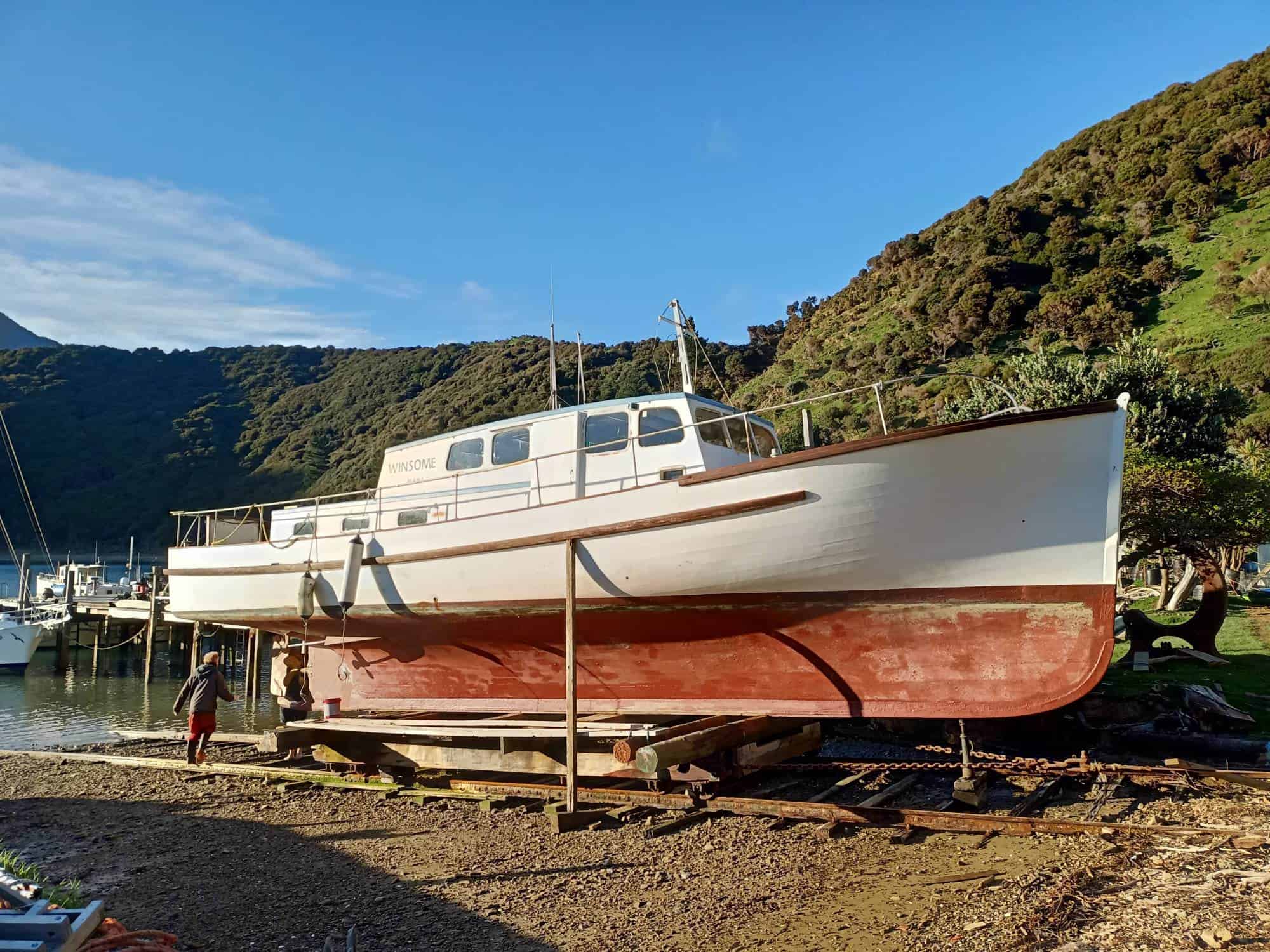
NZ Launches
From classic woodies to modern fibreglass boats NZ has every type of launch. Our growing list of launches aims to cover all the years and all the boat types. Discover NZ launches here.

NZ Commercial Boats
Including fishing boats, historic mail boats and passenger launches a commercial boat can be almost anything in NZ. To find a commercial boat look here.
Our Latest NZ Boats
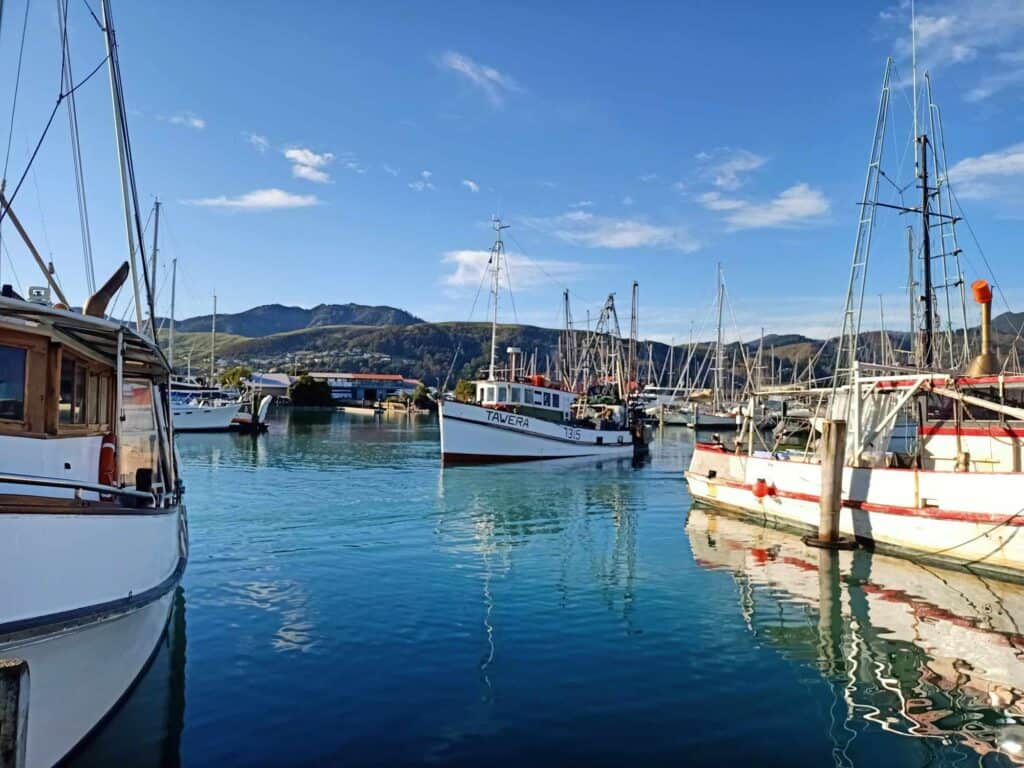
Tawera: 58ft Brassell Fishing Boat
Build Date 1946 Boat Builder George Brassell Length 58 Feet Beam 15 Feet 6 inches Building Tawera During the war George Brassell skippered the examina…
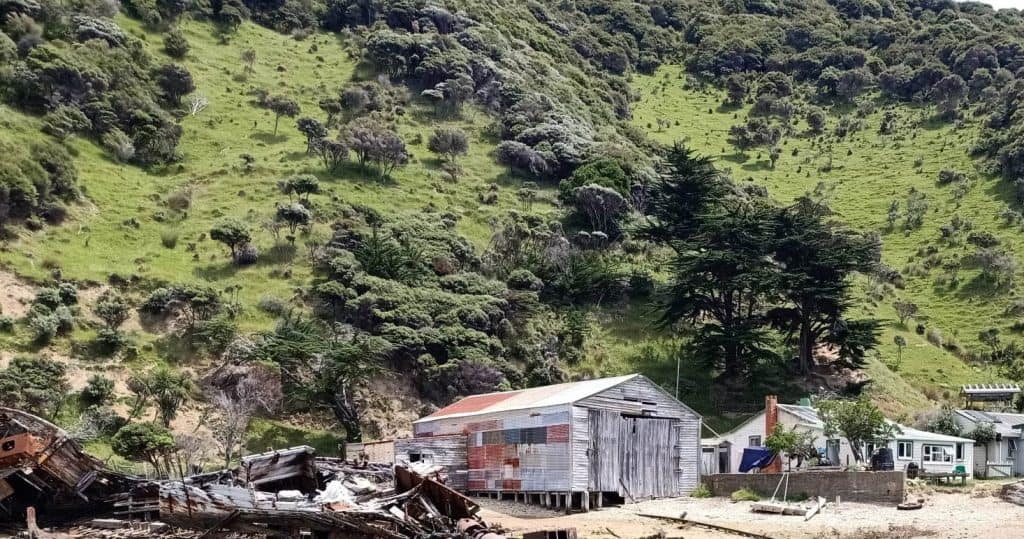
Murabel: 22ft Wakatahuri Boat
Build Date 1933 Boat Builder Norman Wells and George Woodroofe Length 22 Feet Beam 6 Feet Everything We Know About Murabel The Wakatahuri School teach…
Bonny: 22ft Ronnie Wells Launch
Build Date 1930 Boat Builder Ronnie Wells Length 22 Feet Beam Unknown Everything We Know About Bonny Bonny is perhaps the first boat built by Ronnie W…
Our mission at NZ Boat Encyclopedia is to create an online community driven archive of NZ boats and boating stories. Each week we add new boats to the sit so make sure to check in regularly to discover our latest articles.
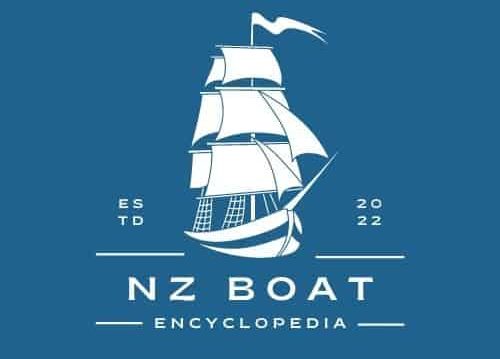
Better Sailing
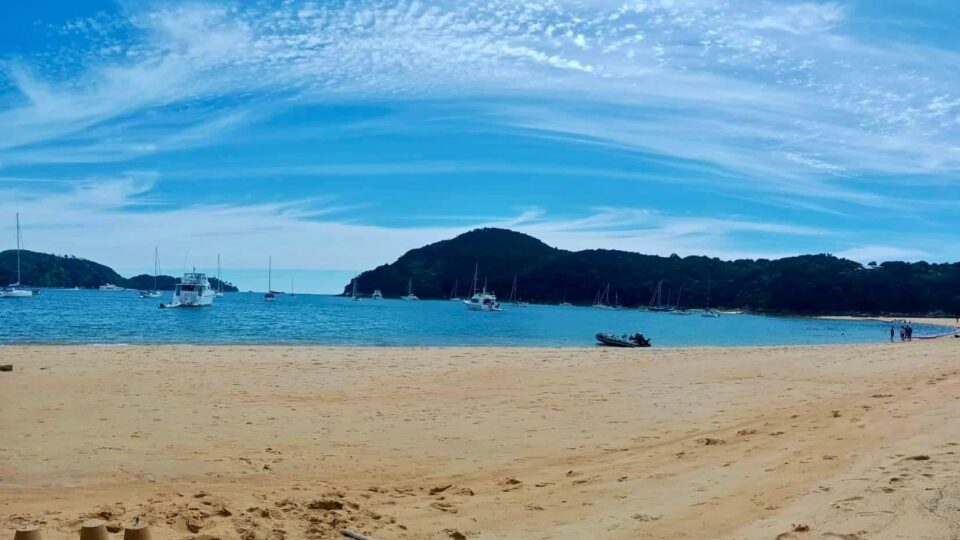
Best Sailing Destinations in New Zealand
New Zealand’s oceans have more coastline than the continental United States, so there’s plenty to see and do. By sailing along the water, you might get a distinct perspective of the surreal panorama. New Zealand is a place that is tailor-made for spectacular sailing adventures, with sheltered sounds, bays filled with islands, and more than 9,320 miles of coastline. Secluded anchorages and waterways abounding with vibrant marine life will certainly make your stay unforgettable there. So, here are the best sailing destinations in New Zealand, keep reading!
Auckland, or the “City of Sails,” boasts more boats per capita than any other city on the planet. The Maritime Museum, which has an operating fleet of four heritage vessels that provide tourists the unique experience of sailing the Waitemata Harbor, is located in Auckland. The city has an ever-growing number of restaurants, bars, and cafes. The Hauraki Gulf, which Auckland Harbor breaks out into, is a popular sailing destination. You can visit a variety of gorgeous islands by using one of the local ferries or with your own vessel. Take a trip to Rangitoto Island’s dormant volcano and hike to the peak for spectacular city views. Auckland’s North Shore also protects the city from Pacific storms. You can also head north to the Bay of Islands, a popular boating location with over 100 islands to explore and a subtropical climate that makes it a terrific year-round getaway.
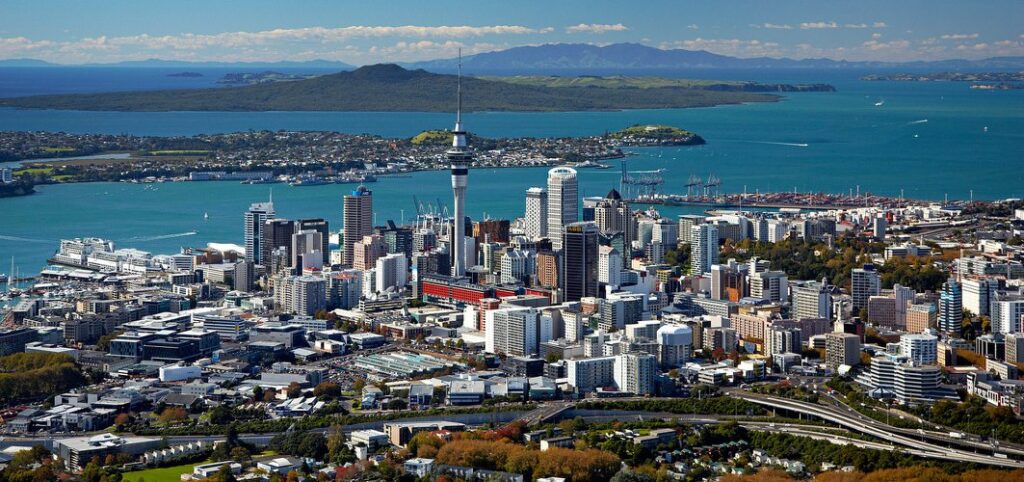
Hauraki Gulf, Auckland
This beautiful harbor is not distant from New Zealand’s starting point and the most populous city. The Hauraki Gulf, which is directly on Auckland’s doorstep, is made up of more than 50 islands with quiet sandy beaches, rocky terrain, wildlife conservation zones, and 500 safe island anchorages. Waiheke Island is a popular and easy-to-access destination for anyone looking to venture beyond the inner harbor. With its vineyards, galleries, cafes, boutiques, easygoing ambiance, and several anchorages, it’s a favorite sailing spot for many. Also, a boat trip to Kawau Island or Great Barrier Island on the gulf’s outer edge is highly recommended. The Barrier, for example, is noted for its diving and fishing, as well as birdlife, bushwalks, and gorgeous beaches. It also has a hot thermal spring (Kaitoke) to soak in. On your gulf adventures, keep a lookout for whales, dolphins, and blue penguins.
Cape Colville
The outer limit of many sailors’ self-imposed cruising grounds is Cape Colville, the northeastern-most point of the Hauraki Gulf. With its long, sandy beach and lovely surroundings, Great Mercury Island, just one day to the southeast, is an outstanding sailing ground. Mercury Bay, Mayor Island, and Slipper Island are among the anchorages where you can break up your voyage south depending on the weather.
Tauranga and Mount Maunganui, its sister city, are pleasant locales that will attract you for a variety of reasons. You can rent a car from there to visit the North Island’s most well-known inland attractions. Rotorua for its culture and thermal activity, Lake Taupo for breathtaking scenery, and Tongariro National Park for its lunar terrain. Tauranga is also a fantastic site to work on boats because it has some of the lowest marina and yard fees on the North Island. Most sailors are confined to the north/central area of the North Island due to the more intense weather of the south, especially since land travel to the South Island is relatively accessible. Of course, for those who do venture south, the rewards are multiplied.
Bay of Islands, Northland
The Bay of Islands is a maritime playground that spans 144 islands between Cape Brett and the Purerua Peninsula in Northland. The Bay’s simple accessibility, rich history, and the plethora of nautical activities combine for a holiday that can be as action-packed or peaceful as you wish. Because of the abundance of marine life in these waters, the Bay of Islands is home to pods of playful dolphins, as well as orcas and whales. Scuba diving and snorkeling for scallops and crayfish is a thrilling experience, and the fishing is excellent.
On ribbons of walking pathways, you can spend hours exploring lovely islands like Roberton and Urupukapuka. And, also dive in pristine white beaches and or anchor if possible. Note that for any wind direction, the Bay provides safe anchorages. As part of your sailing journey, you can participate in activities such as diving and kayaking, both of which are excellent ways to explore above and below the ocean.
Malborough Sounds and South Island
In this gorgeous region of the South Island’s north-eastern tip, boating choices abound. There are more than 1500 kilometers of coastline to explore, including some of the best sailing in the country. The three primary departure ports are Picton, Havelock, and Waikawa. It’s a visual treat to cruise the picture-perfect Queen Charlotte, Kenepuru, and Pelorus Sounds. Bottlenose and hector dolphins, king shags, blue penguins, and fur seals will definitely capture your attention.
Sailing across the Cook Strait and across the beautiful Marlborough Sounds to the South Island is a great way to escape off the beaten path. There are various places to visit in the Marlborough region, including some of New Zealand’s top wine districts and countless restaurants serving some of the country’s best seafood. All the way down the South Island’s wild and diverse coasts, there are endless opportunities to explore. Don’t omit to visit Milford Sound in Fiordland National Park which is best explored by boat.
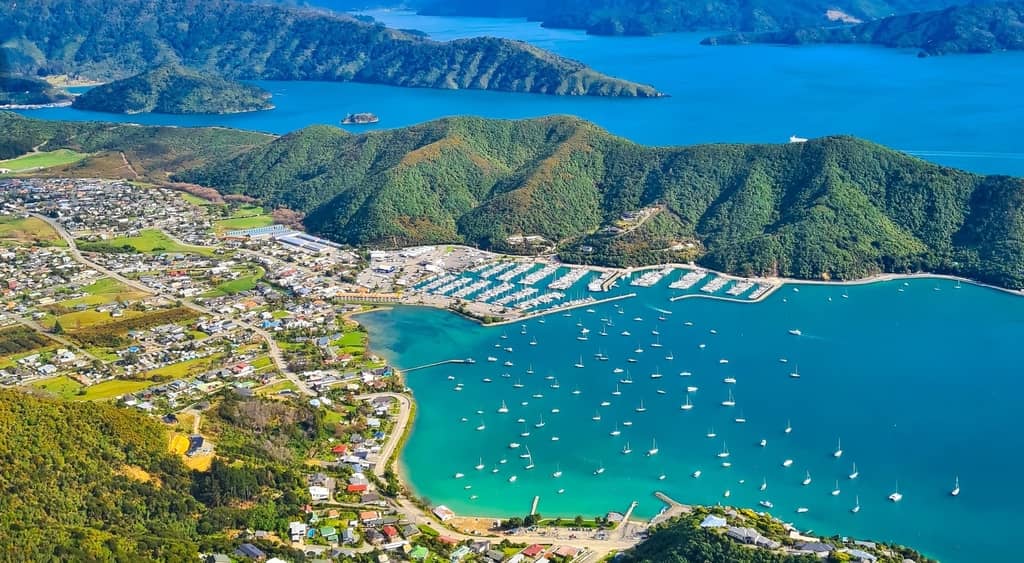
Abel Tasman National Park, South Island
The Abel Tasman National Park, located near the southernmost tip of the South Island, is a coastal paradise that is geographically scenic and ideal for sailing experiences. The area is cloaked in native woodland, which cascades down to meet appealing white-sand beaches that softly give way to the beautiful ocean. The headlands are crisscrossed with walking trails, and just offshore is the Tonga Island Marine Reserve, a protected undersea area with superb snorkeling. A lovely pink alga covers much of the rocks here, while crayfish and conga eels hide in cracks. There are numerous fish species to be found in the vicinity, including snapper, blue cod, tarakihi, and moki.
Abel Tasman has the sunniest hours in the country, and a New Zealand Fur Seal Colony allows visitors to meet them. Kayaking is a terrific way to see the iconic split apple rock. Abel Tasman is especially ideal for families, with activities including snorkeling, swimming in small, secure bays, and watching fur seals!
Canterbury is a region of remarkable contrasts, a haven for those seeking incredible scenery and adventure. From lush vineyards and wild coastlines to sky-piercing mountains and pristine glacial lakes, it’s the best for nature-lovers. Lay back and relax in Hanmer Springs’ natural hot pools, visit boutique galleries and secret bays in Akaroa and Banks Peninsula, or sample the joys of the North Canterbury wine area. Alternatively, visit the Mackenzie district and Aoraki/Mount Cook National Park to see the turquoise lakes, impressive glaciers, and sky-piercing alps.
The Canterbury region has a diverse range of boating destinations, from braided rivers to vast stretches of coastline, as well as lakes. Wildlife interactions, vivid blue waters, high coastal cliffs, and a history involving French pioneers are all reasons to visit Akaroa Peninsular, according to locals. The Rakaia River beckons if you have a fishing boat and are looking for an adventure.
The Bay of Plenty
The Bay of Plenty stretches about 260 kilometers between Tauranga in the west and Cape Runaway in the east. Tauranga and Mount Maunganui are two towns that have grown up together. Tauranga is a mini-Auckland, with plenty of shopping and great eating, while Mt Maunganui is a more laid-back beach destination. Mount Maunganui is not just the name of the town, but also the name of an ancient volcano cone that sits at the end of Mount Maunganui Beach. Try to find Oscar, the local seal, as you walk around the base. While sunbathing on the rocks, he enjoys being the center of attention.
Climb Mt Maunganui at sunrise or sunset for the best views of the Bay of Plenty. It’s a short but steep climb, but I promise you won’t be disappointed. Mt Maunganui and Ohope Beaches are frequently ranked the best in the country. These east coast gems have a lot to offer people who enjoy being on the sea. The beautiful Bay of Plenty is home to harbors, sandy beaches, and excellent fishing. Tuhua/Mayor Island and Motiti Island in Tauranga are two islands worth visiting. Moutohora/Whale Island, near Hope, is a pest-free paradise down the coast.
Another favorite location for sailors and cruisers is Wellington, New Zealand’s lovely capital. Wellington, or “the Windy City,” offers a lot of favorable winds that you may take advantage of. With street performances, trendy cafes, and art surrounding the piers, strolling the Wellington Waterfront is the greatest way to see the city. Te Papa, New Zealand’s National Museum, is also located there and is a must-see for visitors to the city.
Note that Wairarapa, Wellington’s own wine country, has some of New Zealand’s best pinot noir. And, it is just a 90-minute drive or train ride from the city. Moreover, the Hutt Valley is an adventure lover’s dream, with over 3,000 hectares of parks, reserves, bush-clad hills, beaches, walks, and pathways. Sail along the Kapiti Coast, which stretches 40 kilometers from Paekakariki to Otaki and consists of a string of charming villages. A visit to Kapiti Island, and anchoring overnight, is a must on any voyage to the coast.
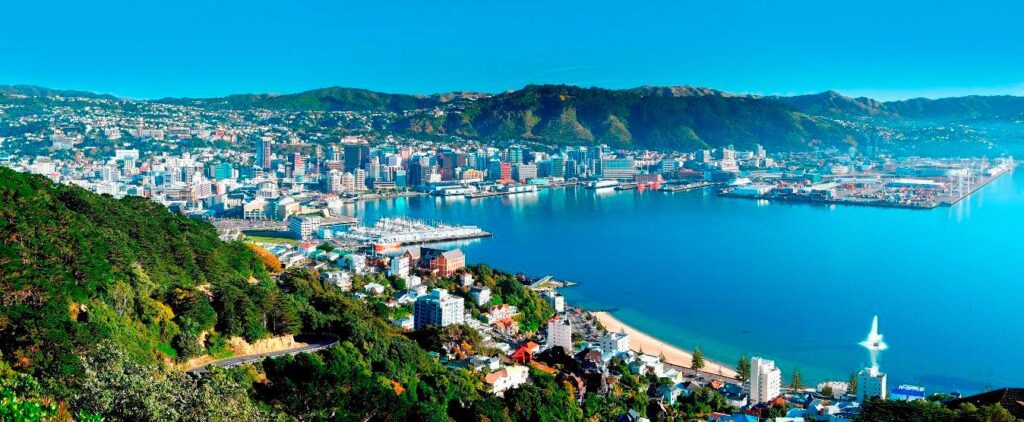
Lake Taupo and Rotorua Lakes
This lake, or the “Big Daddy” of New Zealand Lakes, is large enough to handle boatloads of fun. On Taupo’s normally tranquil waters, you can enjoy jet boats or skis, scenic tours, swimming, kayaking, fishing, sailing, etc. Visit the iconic Maori rock sculptures along the lakefront, which were built in the 1970s to preserve the lake from additional volcanic activity. You might also find a hot spring along the lake’s edges. Popular vacation places can be found on the lake’s south end.
More than a dozen big volcanic lakes provide plenty of opportunities for boating, watersports, and fishing in and around Rotorua. Lake Rotorua, Tarawera, Rotoiti, Okareka, and the beautiful Blue Lake are among the most well-known. Because of its great camping grounds, picnic places, and walking trails, the latter (called for its deep color) is popular with families. Thermal pools, accessible only by boat, can be found on the shores of various lakes, such as Lake Rotoiti.
Peter is the editor of Better Sailing. He has sailed for countless hours and has maintained his own boats and sailboats for years. After years of trial and error, he decided to start this website to share the knowledge.
Related Posts

9 Breathtaking Places to Visit while Sailing Across The Greek Ionian Islands

Atlantic vs Pacific: Which is More Dangerous for Sailing?
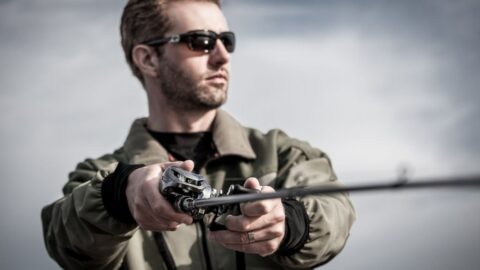
Unveiling the World’s Best Fishing Secrets: 10 International Hotspots for Anglers

Why Do Sailboats Lean?
- Buyer's Guide
- Destinations
- Maintenance
- Sailing Info
Hit enter to search or ESC to close.

Yachting in New Zealand
New Zealand is a small island country surrounded by the ocean, known for its hot sun, polar glaciers, and unique wildlife such as kiwis and penguins. It is a place that is both amazing and inaccessible for tourists from the northern hemisphere. With a lot of water around it, sailing has become a national hobby, just like in Australia. They love sailing yachts and motor yachts alike.
Yachting in New Zealand can be compared to Italian wine or French perfume. People come here to explore the ocean, and the city of Auckland considered the Mecca for yachtsmen, has hosted America’s Cup twice. There are many bays, marinas, and yacht clubs throughout the country.
New Zealand is also called Aotearoa, meaning “Land of the Long White Cloud” in the Maori language. It was founded in 1840, and the first settlers arrived about 1000 years ago. Some of the stones here are over 500 million years old, dating back to the time when, as legend has it, the hero-demigod Maui fished North Island out of the sea with his magic fishing hook.
The North Island is one of the world’s two best sailing destinations, welcoming visitors with windswept coves and bays, lush vegetation, and the main city of the country, Auckland. It is a thriving international business center and a fantastic tourist destination with much to see and do, high-end cuisine, and boutique shopping. The South Island has a wild and rugged coastline, and spectacular scenery, and is home to Queenstown, known as the extreme sports capital of the world.
The South Island is glaciers, snow-capped mountains stretching into the sea, and untouched coasts. It is almost a primeval region.
The country’s beauty is undeniable, from lush rainforests and warm golden beaches to spectacular lakes and mountains, moody fjords, and trendy cities. New Zealand has a population of just under four million and is about the size of Japan, but it is amazingly pristine for those looking to unwind and rejuvenate.
If you’ve watched the Lord of the Rings trilogy, you’re already familiar with New Zealand’s landscapes. The snow-covered peaks around Mount Cook, also called Aoraki, which means “Piercing the Clouds”, rise from the unusually blue glacial lakes. On the south coast, waves break against rocks, and picturesque cliffs rise, while stunning fjords promise extraordinary adventure for sailors and plenty of hiking opportunities.
The northern island is full of windy bays and bays with tiny volcanic islands located nearby. There is a lot of vegetation and wild places here, but this region is more developed and populated. Auckland, the capital of New Zealand, is located here and is an international business center.
World-class diving spots can be found north of the Bay of Islands where you can spot whales, sea devils, and many other types of fish. The Marlborough Sounds is another popular luxury yacht charter destination, with spectacular fjords, secluded bays, and the best Sauvignon Blanc vineyards. However, nothing compares to the accessibility and beauty of the scenery with Hauraki Bay, where you can sail between Auckland, the Coromandel Peninsula, and the Great Barrier Island.
In New Zealand, you will find a temperate climate, equipped and wild embankments, but most importantly, a lot of unusual places that you will not see anywhere else in the world. You will be able to visit the most popular points among yachtsmen, enjoy the stunning natural scenery, and challenge yourself.
Yachting in New Zealand offers a range of exciting and luxurious experiences. If you’re planning a trip to New Zealand and want to explore the country’s stunning coastlines and picturesque islands, then a yacht charter is a perfect way to do it. Here is a suggested route for your New Zealand yacht adventure:
Day 1 – Auckland to Waiheke
On the first day of your trip, your luxury charter yacht will be waiting for you in Auckland. After exploring the city and its attractions, you will head to the island of Waiheke, famous for its wineries. Take a wine tour and enjoy some of the local fine wines, followed by a relaxing evening on the yacht.
Day 2 – Waiheke
Take in the scenic views of the island’s ominous volcano, Rangitoto, and enjoy a picnic amidst the flowers strewn on the rocky ground. Then, head out on a real wine tour, visiting some of the island’s more than 20 wineries. Afterward, taste some local lobsters and relax on the yacht.
Day 3 – Tryphena, Great Barrier
Spend the day at the former Midlands beach, swim, or go kayaking in Tryphena, the island’s most populated town. In the evening, you will head back to your yacht to relax and enjoy its luxurious amenities.
Day 4 – Harataonga Bay, Great Barrier
Explore the wild beauty of nature in Harataonga Bay. With no crowds of tourists or numerous yachtsmen, this place is perfect for enjoying extensive beaches that stretch over 1300 feet. In good weather, this place will become a real wonderland for you close to other people.
Day 5 – Kawau
Cross Hauraki Bay and find yourself off the coast of Kawau Island. Visit a beautiful Victorian house built in the 19th century where Sir George Grey, governor of New Zealand, lived. Enjoy lunch at the beach cafe, and then relax on your yacht for the rest of the day.
Day 6 – Whangaparaoa
Take a break at the northwestern tip of Whangaparaoa, where you can swim in the calm waters of a quiet harbor. Leave the yacht and take a kayak to swim through the mangrove forests, and put on comfortable shoes for a long walk through the heather fields. Some of the best golf courses in the world are here – enjoy a game and then head back to your yacht for a relaxing soak in the hot tub.
Day 7 – Auckland
On the last day of your trip, the captain will direct the yacht back to Auckland. Spend the day exploring the city’s shops and trying the local cuisine before heading to the airport.
In conclusion, yachting in New Zealand offers a unique and unforgettable experience. With stunning coastlines, picturesque islands, and a temperate climate, it’s a must-visit destination for yachtsmen looking for adventure and relaxation.
Related Posts
Dubai marina: a modern and elite area of dubai, yacht charter in the uae, yachting in dubai.
Type above and press Enter to search. Press Esc to cancel.
Please use a modern browser to view this website. Some elements might not work as expected when using Internet Explorer.
- Why Charter Homepage
- Luxury Yacht Vacation Types
- Corporate Yacht Charter
- Tailor Made Vacations
- Luxury Exploration Vacations
- ALL 3,697 Yachts For Charter
- Motor Yachts
- Sailing Yachts
- Classic Yachts
- Catamaran Yachts
- Special Offers
- by Destination
Yacht Reviews
- Destination Guides
- Inspiration & Features
- Mediterranean Charter Yachts
- France Charter Yachts
- Italy Charter Yachts
- Croatia Charter Yachts
- Greece Charter Yachts
- Turkey Charter Yachts
- Bahamas Charter Yachts
- Caribbean Charter Yachts
- Australia Charter Yachts
- Thailand Charter Yachts
- Dubai Charter Yachts
- Destination News
- New To Fleet
- Charter Fleet Updates
- Industry News
- Yacht Shows
- Corporate Charter
- Charter Advice
- Why Use a Yacht Broker
- Charter Costs Explained
- Add my yacht
- Yacht Charter Destinations
- South Pacific
- New Zealand
6 places to visit while cruising New Zealand’s North Island by superyacht

- Ideas & Tips
- Itineraries
- See & Do
- Eat & Drink
By Rebecca Bradbury Last Updated: 19 May 2023
From craggy coastlines and sweeping beaches to snow-capped mountains and verdant forests, New Zealand is truly a majestic country. Rent a superyacht here and have an adventure of a lifetime, just don’t miss these six must-visit places when cruising the North Island on a New Zealand superyacht charter .
Bestowed with incredibly diverse and astoundingly beautiful landscapes, New Zealand charters offer outdoor adventures galore. But, you don’t have to be actively inclined to enjoy this spectacular country as wineries, dynamic cities and a fascinating history also form part of its appeal.
6 Places to Visit on a New Zealand yacht charter:
Waiheke Island
Coromandel peninsula, great barrier island, poor knights islands marine reserve, bay of islands.
However you wish to to spend your vacation, be rest assured that the North Island has it all. Read on to discover the six best places to visit while exploring by superyacht.

Nicknamed the ‘City of Sails’ , Auckland floats on two glittering harbors, Waitemata and Manukau, both of which are gloriously sprinkled with ferries, sailing boats and luxury yachts voyaging to waterside towns and nearby islands in the Hauraki Gulf.
Lush walking trails, golden sand beaches and unspoiled islands are all within easy reach, but it’s certainly worth planning a few days into your luxury yacht charter itinerary to explore New Zealand’s largest city.
Auckland, after all, regularly ranks as one of the world’s most liveable cities. With 48 volcanic hills scattered about, a dynamic dining scene, museums, art galleries and designer shops, there is much to keep you and your charter party entertained.

Beautiful coastlines, boutique wineries and a blissed-out bohemian vibe make Waiheke an ideal island escape for yacht-goers, wine-lovers and free spirits alike.
Not far from Auckland, in the Hauraki Gulf, the 20-kilometer-long island is blessed with its own warm, dry microclimate. Emerald waters lap at rocky bays on the island’s landward side, while its ocean flank has some of the best sandy beaches in the region.
Around 30 wineries, many with tasting rooms and swanky restaurants, dot the island alongside quirky art galleries and craft stores. Those with a more adventurous disposition, however, will be satisfied with the hiking, kayaking and zip-lining opportunities.
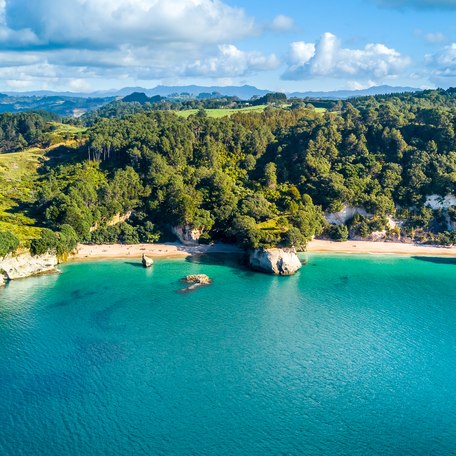
The Coromandel Peninsula juts into the Pacific Ocean just 55 kilometres east of Auckland but feels like a world away. Sparsely populated and undeveloped, this place offers New Zealand yacht charter guests some serious seclusion as well as some spectacular scenery.
On its eastern side, a wild stretch of rugged coastline is dotted with dreamy white sands. Not to be missed are Cathedral Cove, a picturesque marine reserve, and Hot Water Beach , where visitors come to dig a pool at low tide and bathe in the piping hot water which flows up to the surface from the earth’s interior.
Other activities on offer include hiking through the native rainforest, cycling the Hauraki Rail Trail and discovering the relics of the area’s gold mining heritage.
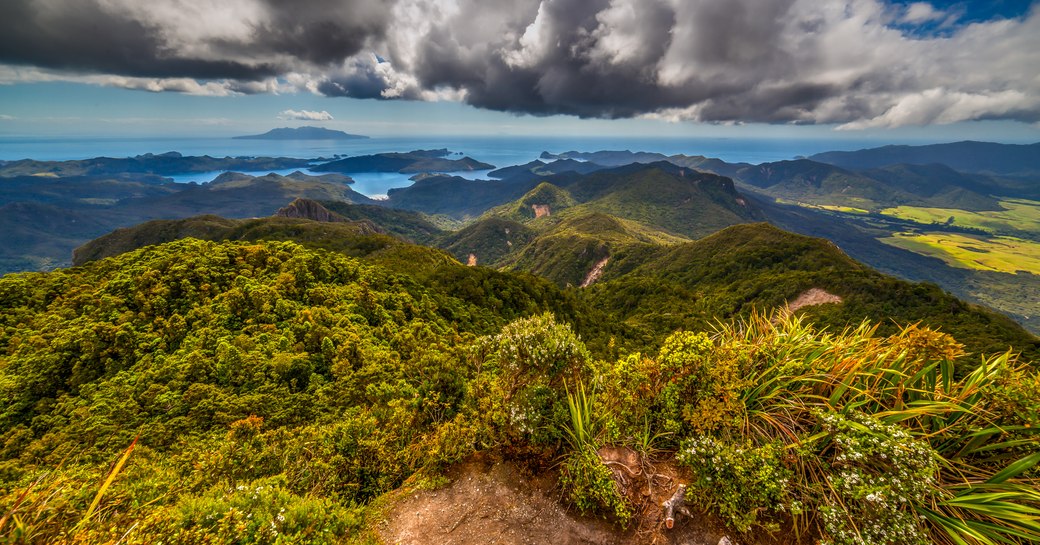
The fourth largest of New Zealand’s islands, Great Barrier shelters Auckland from the relentless swells of the Pacific Ocean. Rugged and exceptionally beautiful, this is the land time forgot and makes for a wonderful superyacht charter destination.
Come here for all kinds of wilderness adventures. On land, a network of tramping tracks wind through the native New Zealand bush past hot springs and old kauri dams.
Diving, fishing and kayaking are also possible, with a beautiful coastline of high cliffs and long, white surf beaches in the east and deep, sheltered harbours and calm, sandy bays in the west.
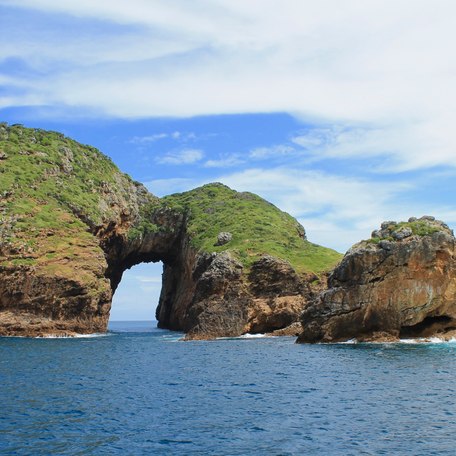
A five-hour cruise northwards brings New Zealand yacht-goers to the Poor Knights Islands Marine Reserve which, scattered 23 kilometres off Tutukaka Coast , is one of the top dive locations in the world.
The volcanic origins of these 11-million-year-old islands make for spectacular drop offs, walls, caves, arches and tunnels, while converging warm water currents, a micro-climate and thousands of years of separation from the mainland have resulted in a unique biodiversity.
From turbulent sunlit waters and kelp forests to the dark waters of the many caves to sponge gardens, gorgonian fields and hundreds of colourful fish, there is much for divers to discover.

Luring New Zealand superyacht charters further up the coast with its seductive good looks is the Bay of Islands. Clear, sparkling blue waters are punctuated with 144 undeveloped islands, presenting a maritime adventure playground with penguins, marlin, dolphins and whales to watch out for.
On land, the islands are dotted with tiny, timeless towns and miles upon miles of rolling hillsides swoop down to deserted beaches or trace a forest trail to a wine estate or waterfront café.
The Bay of Islands is also a place of huge historical significance. Maori settled here in their early migrations and it was the site of New Zealand’s first permanent British settlement. Plus, it was where the Treaty of Waitangi , which remains the linchpin of race relations in NZ today, was drawn up and signed in 1840.
Bestowed with incredibly diverse and astoundingly beautiful landscapes, New Zealand offers outdoor adventures galore
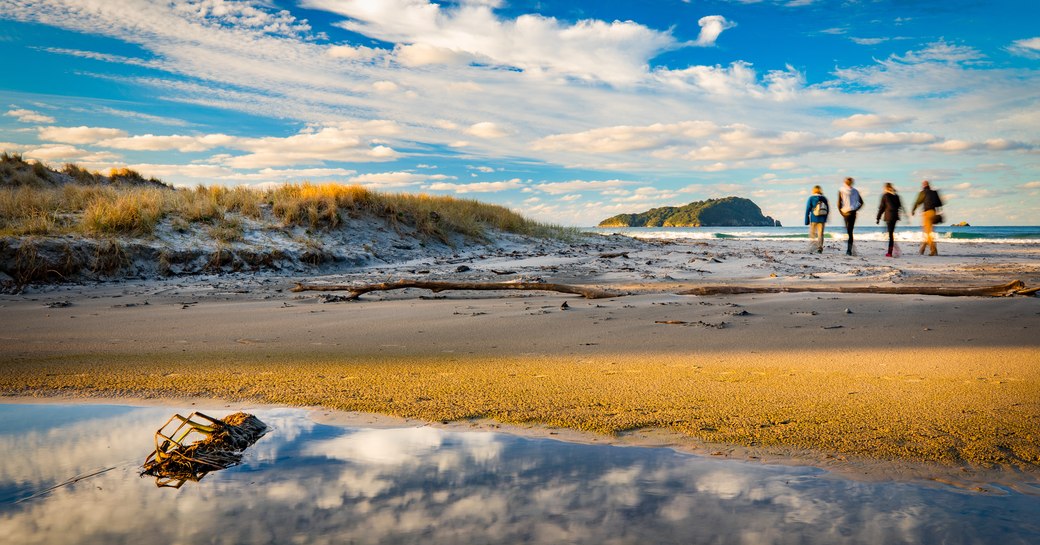
For more details on planning a New Zealand yacht charter, speak to your preferred charter broker .
Alternatively, view all luxury yachts available for charter in New Zealand .
RELATED AREA GUIDES
View destinations guides, photo galleries & itineraries for areas related to this news article
- READ MORE ABOUT:
- North Island
- new zealand yacht charter
Book with Ease - Speak with a Charter Expert
Our yacht charter experts will:
- Discuss your vacation plans
- Check availability & shortlist suitable yachts
- Negotiate booking & prepare your itinerary
Enquire now for yacht availability & free consultation.
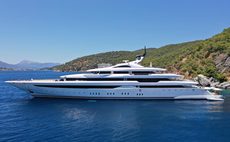
- See All Reviews
Latest News

21 August 2024

19 August 2024
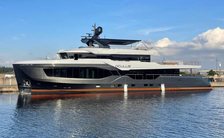
13 August 2024
- See All News
Featured Luxury Yachts for Charter
This is a small selection of the global luxury yacht charter fleet, with 3697 motor yachts, sail yachts, explorer yachts and catamarans to choose from including superyachts and megayachts, the world is your oyster. Why search for your ideal yacht charter vacation anywhere else?

136m | Lurssen
from $4,446,000 p/week ♦︎
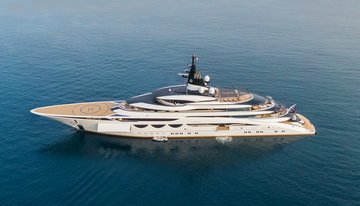
115m | Lurssen
from $2,895,000 p/week ♦︎
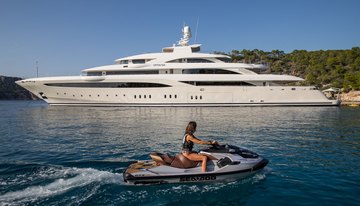
85m | Golden Yachts
from $1,000,000 p/week ♦︎
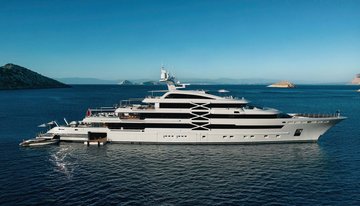
88m | Golden Yachts
from $1,223,000 p/week ♦︎
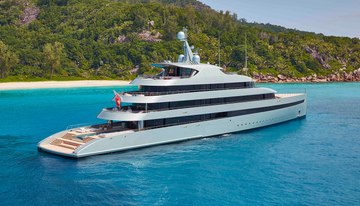
84m | Feadship
from $1,111,000 p/week ♦︎

93m | Feadship
from $1,556,000 p/week ♦︎
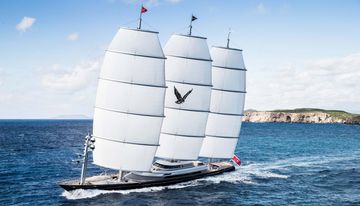
Maltese Falcon
88m | Perini Navi
from $490,000 p/week
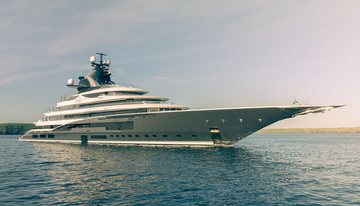
122m | Lurssen
from $3,000,000 p/week
As Featured In
The YachtCharterFleet Difference
YachtCharterFleet makes it easy to find the yacht charter vacation that is right for you. We combine thousands of yacht listings with local destination information, sample itineraries and experiences to deliver the world's most comprehensive yacht charter website.
San Francisco
- Like us on Facebook
- Follow us on X
- Follow us on Instagram
- Find us on LinkedIn
- Add My Yacht
- Affiliates & Partners
Popular Destinations & Events
- St Tropez Yacht Charter
- Monaco Yacht Charter
- St Barts Yacht Charter
- Greece Yacht Charter
- Mykonos Yacht Charter
- Caribbean Yacht Charter
Featured Charter Yachts
- Maltese Falcon Yacht Charter
- Wheels Yacht Charter
- Victorious Yacht Charter
- Andrea Yacht Charter
- Titania Yacht Charter
- Ahpo Yacht Charter
Receive our latest offers, trends and stories direct to your inbox.
Please enter a valid e-mail.
Thanks for subscribing.
Search for Yachts, Destinations, Events, News... everything related to Luxury Yachts for Charter.
Yachts in your shortlist
About Sailing
Sailing has been at every edition of the modern Olympics. The first edition in 1896 had to be cancelled due to bad weather. Therefore, the first time sailing debuted was at the Paris 1900 Olympic Games. Sailing has constantly evolved since the first races in 1900.
New Zealand Sailing
New Zealand Sailing debuted at the Melbourne 1956 Olympic Games. Sailing has appeared at every Olympiad since (except Moscow 1980, when the Games were boycotted) – 16 Olympiads.
Sailing is one of New Zealand's most successful Olympic sports with 23 medals.
The first New Zealand sailors competed at Melbourne 1956.
• Jack Cropp OLY#80 and Peter Mander OLY#107 in the Sharpie.
• Albert Cuthbertson OLY#83, Peter Mander OLY#107, Robert Stewart #120, William Swinnerton OLY#122 in the Dragon Open class.
The first females were Fiona Clarke (nee Galloway) OLY#551 and Jan Shearer-Jones OLY#576 crewed together in the 470 at Seoul 1988.
New Zealand has had 114 Sailors compete at the Olympic games (91 males, 23 females). 38 of these sailors have competed at two or more Olympic games.
Sailing Terminology
470 - A double-handed (two person) mono-hull dinghy with three sails. One sailor is attached to the boat via a trapeze (harness) allowing them, among other things, to counterbalance the force of the wind in the sails by standing on the edge of the boat and leaning out.
49er/49erFX - A double-handed high performance skiff dinghy characterised by its speed and ‘wings.’ Both sailors are in trapezes.
Bow - The front of a boat.
Buoy - A floating marker used to designate key points on the course.
Dinghy - A small boat characterised by having one hull and a centreboard. Laser, Laser Radial, 470, Finn are the classes of dinghy raced at the Olympics.
Centreboard/Daggerboard - An adjustable fin primarily used to stop the boat moving sideways through the water.
Finn - The men’s single-handed Olympic dinghy class. It features one main sail and is heavier than the other classes of dinghy.
Fleet racing - A format of racing where all entries race against each other around a course. Points are awarded relative to where a boat places in the race and are tallied over a set number of races.
Hull - The watertight body of a boat.
Laser/ Laser Radial - A single-handed mono-hull dinghy class with one main sail. A light, simple standardised design – very common around the world – means sailors rely more on their own fitness, agility and strength than other classes. The Laser Radial features a smaller sail than the standard Laser.
Leeward - The side furthest away from the wind.
Mark - A corner of the racecourse as defined by a buoy.
Medal race - The final race of fleet racing format where the points awarded for placings are doubled. This result cannot be discarded from the total score.
Multi-hull - A boat with more than one hull. A boat with two hulls is also known as a catamaran. The Nacra 17 class will debut in Rio as the multi-hull class, featuring mixed crews of one male and one female.
Sailboard - Combines elements of surfing and sailing with a sail attached to a long board. Sailboarding or board sailing is also known as windsurfing. The Olympic sailboard class is the RS:X which has been in place since 2008.
Skiff - A type of light, open dinghy with a self-draining hull. In Rio the 49er (men) and 49erFX (women) are the two skiff classes, each featuring two-person crews.
Stern - The rear of a boat.
Windward - The side closest to the wind. The windward mark is the mark at the end of the upwind (into the wind) leg of the course.
NZ Fast facts

Olympic Games Paris 2024

Olympic Games Tokyo 2020

Olympic Games Rio 2016

Olympic Games London 2012
Olympic games beijing 2008, olympic games sydney 2000, olympic games atlanta 1996, olympic games barcelona 1992, olympic games seoul 1988, olympic games los angeles 1984, olympic games tokyo 1964, olympic games melbourne 1956.
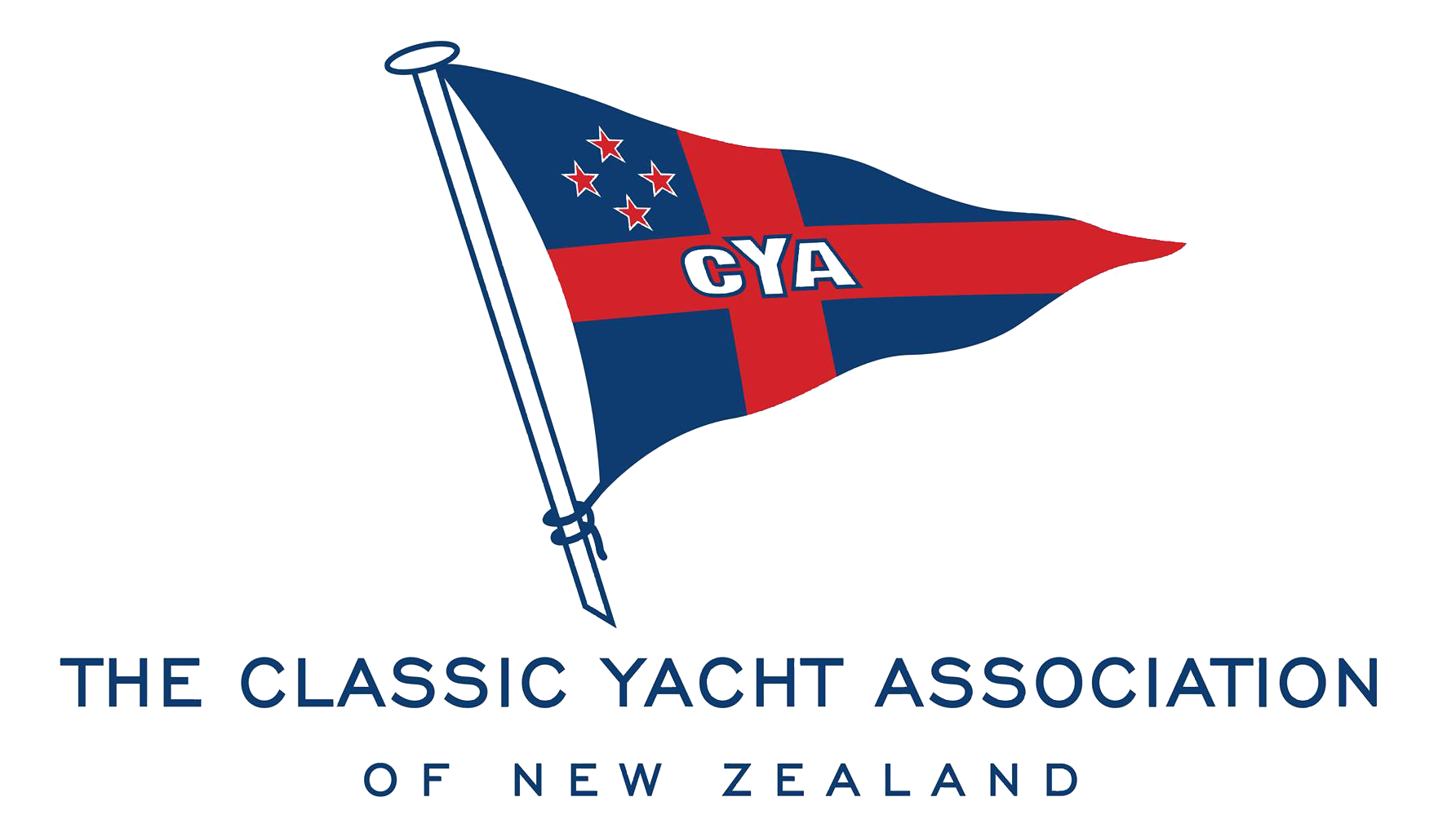
6 item(s) found

Posted 1 month ago
Yes! THAT Rainbow II Rainbow II was designed by Olin J Stephens II, of Sparkman and Stephens, to meet the RORC rule. She was built...
Yachts / North Island

1962 Concordia Yawl
Posted 4 months ago
Soon to be commissioned and be found at her mooring in Stonington Harbour, Connecticut USA. Woodwind is a handsome example of the successful and elegant...
Yachts
$155,000.00

Share in Moorea (Kettenburg 43)
Sebastien is looking to share the passion and care for MOOREA, an exquisite Kettenburg 43 from 1965 (designed and built by a famous boatbuilding family...
Yachts / Auckland
$29,500.00
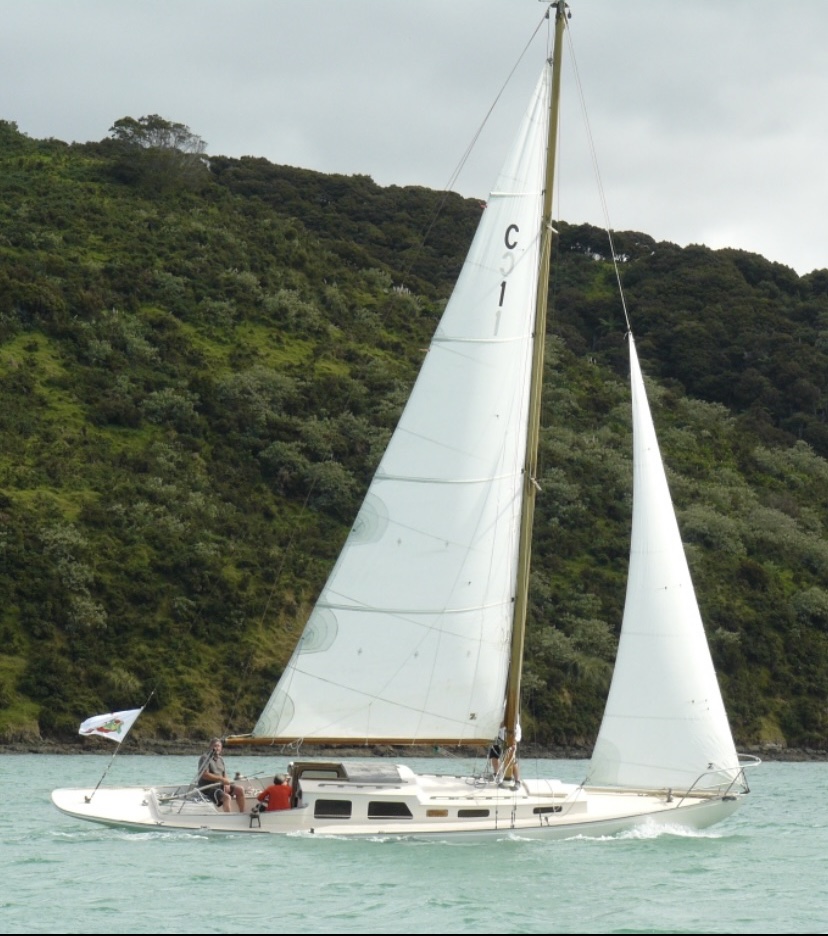
Posted 5 months ago
Logan Yacht “Queenie” Launched 1904 36 ft x 7’ 4” beam x 5’ 3” draught Currently at Whangaroa Harbour. Well maintained. Reluctant sale after 44...
$22,000.00
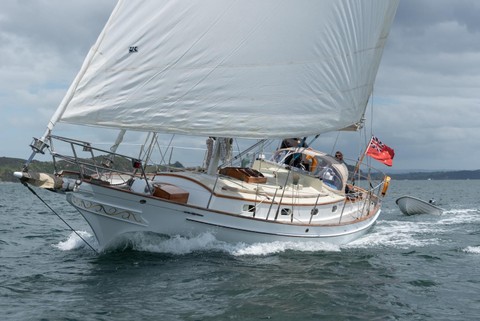

Blue Water 41
Posted 6 months ago
PRICE REDUCTION! Kauai Uhiwai has had an amazing and unique build history. The hull was constructed over a male mold in 1974 and meticulously constructed...
$250,000.00

Tumlaren – 28 ft Knud Reimers 1936 design
Posted 9 months ago
A recently fully renovated Knud Reimers 1936 designed 28' Tumlaren. Built in Auckland in the 1950s this beautiful double ended kauri hulled yacht had a...
Yachts / Bay of Islands and Northland
Subscribe to our newsletter
Sheerlines includes updates on upcoming social events, races and regattas. With your subscription you'll also receive the CYANZ Journal bi-monthly.
You have successfully joined our subscriber list.
We are grateful to be supported by the following businesses and organisations. Please support them in return when you can.

© 2023 The Classic Yacht Association of New Zealand. Privacy Policy Follow us on Facebook , Instagram , or LinkedIn
Site by KAREBOU
- Explore boats
- Text +1 910-447-2456 Call +1 910-447-2456
- New Zealand
Your Boating Paradise at the Edge of the World
- Sailo Home
- Destinaton Guides
Sail, Explore, Repeat!
Discover New Zealand's Breathtaking Coastlines, Pristine Lakes, and Iconic Fjords
New Zealand is a dream destination for boating enthusiasts, with its stunning coastline, pristine islands, and diverse marine life. Whether you want to sail around the scenic bays, cruise to the remote fjords, or charter a luxury yacht for a special occasion, you’ll find plenty of options to rent a boat in New Zealand and explore this beautiful country from the water. In this article, we’ll give you some tips on sailing in New Zealand, suggest some itineraries for your boating adventure, and share some of the top experiences and attractions you can enjoy along the way. We’ll also provide some safety and emergency information to help you plan your trip.
Itineraries
New Zealand has two main islands, North Island and South Island, each offering different landscapes, climates, and attractions. Depending on your preferences, budget, and time, you can choose to rent a sailboat in New Zealand and explore one or both islands, or opt for a private boat rental in New Zealand with captain and let someone else take care of the navigation. Here are some of the top nearby destinations that can be reached from New Zealand by boat:
Bay of Islands : This is one of the most popular boating destinations in New Zealand, located in the north of North Island. The bay has more than 140 islands, each with its own charm and character. You can anchor in sheltered coves, swim with dolphins, fish for marlin, or visit historic sites like the Waitangi Treaty Grounds. The bay is also home to the famous Hole in the Rock, a natural arch that you can sail through at high tide. You can rent a boat in New Zealand for a week and explore the Bay of Islands at your own pace, or join a daily boat rental in New Zealand and enjoy a guided tour of the highlights.
Hauraki Gulf : Just south of the Bay of Islands, the Hauraki Gulf is another boating paradise, with 50 islands and hundreds of anchorages to choose from. The gulf is also part of a marine park that protects a rich biodiversity of marine life, including whales, dolphins, penguins, and seabirds. You can sail to Waiheke Island and sample some of the best wines in New Zealand, visit Rangitoto Island and hike to the summit of an extinct volcano, or explore the historic Kawau Island and its mansion house. The gulf is also close to Auckland, New Zealand’s largest city, where you can find many options for motor boat charters in New Zealand with captain or party boat rentals in New Zealand .
Abel Tasman National Park: On the northern tip of South Island, Abel Tasman National Park is a stunning area of golden beaches, turquoise waters, and native forests. The park is best explored by boat, as there are many secluded bays and islands that are only accessible by water. You can rent a sailboat in New Zealand and cruise along the coast, stopping at places like Anchorage Bay, Bark Bay, Tonga Island Marine Reserve, or Awaroa Inlet. You can also kayak, snorkel, hike, or camp along the way. The park is also famous for its coastal track, one of the best hikes in New Zealand.
Marlborough Sounds: Further south on South Island, Marlborough Sounds is a network of sunken valleys that form intricate waterways and islands. The sounds are ideal for sailing in New Zealand, as they offer calm waters, scenic views, and abundant wildlife. You can charter a luxury yacht in New Zealand and enjoy the comfort and convenience of a fully equipped vessel, or rent a boat in New Zealand for a week and discover the sounds at your leisure. Some of the highlights include Queen Charlotte Sound, Pelorus Sound, D’Urville Island, and Ship Cove.
Fiordland National Park: On the southwestern corner of South Island lies Fiordland National Park, a World Heritage Site that protects some of the most spectacular scenery in New Zealand. The park is famous for its dramatic fiords (also spelled fjords), which are deep valleys carved by glaciers that reach the sea. The fiords are surrounded by towering mountains, rainforests, waterfalls, and wildlife. You can rent a boat in New Zealand for a week and explore some of the fiords like Milford Sound (the most famous), Doubtful Sound (the largest), or Dusky Sound (the most remote). Alternatively, you can join a daily boat rental in New Zealand and enjoy a cruise with commentary and meals included.
Top Experiences
New Zealand has more than just beautiful beaches and islands to offer. The country is also rich in culture, history, and adventure. Here are some of the top experiences and attractions you can enjoy while boating in New Zealand:
Visit Hobbiton : If you’re a fan of The Lord of the Rings or The Hobbit movies, you’ll love visiting Hobbiton, the movie set where the scenes of The Shire were filmed. Located near Matamata in North Island, Hobbiton is a charming village of hobbit holes, gardens, and a pub. You can take a guided tour of the set and learn about the behind-the-scenes stories, or book a birthday party boat in New Zealand and celebrate in style at the Green Dragon Inn.
See the glowworms : New Zealand is home to a unique species of glowworms that light up the dark caves with their bioluminescence. You can see these amazing creatures in several places, but one of the best is Waitomo Caves in North Island. You can take a boat ride through the caves and marvel at the starry spectacle, or join a more adventurous tour that involves abseiling, rafting, or tubing through the caves.
Experience Māori culture : Māori are the indigenous people of New Zealand, and their culture is an integral part of the country’s identity. You can learn more about Māori history, traditions, and values by visiting a marae (meeting house), watching a kapa haka (cultural performance), or joining a hāngi (feast cooked in an earth oven). Some of the best places to experience Māori culture are Rotorua, Waitangi, and Te Papa Museum.
Go whale watching : New Zealand is one of the best places in the world to see whales, as many species migrate, feed, or breed in its waters. You can spot sperm whales, humpback whales, orca whales, blue whales, and more throughout the year. Some of the best places to go whale watching are Kaikoura, Auckland, Bay of Islands, and Fiordland. You can join a boat tour with a professional guide, or charter a luxury yacht in New Zealand and enjoy a private whale watching experience.
Skydive over Lake Taupo : If you’re looking for an adrenaline rush, you can’t beat skydiving over Lake Taupo, the largest lake in New Zealand. You’ll jump from 15,000 feet and freefall for 60 seconds, reaching speeds of up to 200 km/h. You’ll then enjoy a scenic parachute ride over the lake and the surrounding volcanoes. You can also skydive over other locations in New Zealand, such as Queenstown, Abel Tasman, or Bay of Islands.
Activities & Best Beaches
New Zealand has plenty of activities to suit all tastes and interests, whether you prefer to relax on the beach, explore the nature, or try something new. Here are some of the best on-the-water and on-land activities you can do while boating in New Zealand:
Kayaking : Kayaking is a great way to get closer to the water and discover hidden gems along the coast. You can kayak around islands, fiords, lakes, or rivers, and see wildlife like dolphins, penguins, seals, or birds. Some of the best places to kayak in New Zealand are Abel Tasman National Park, Milford Sound, Bay of Islands, and Coromandel Peninsula.
Fishing : Fishing is a popular pastime in New Zealand, as the country has some of the best fishing spots in the world. You can fish for trout, salmon, snapper, kingfish, marlin, or tuna, depending on the season and location. You can also join a fishing charter or rent a boat in New Zealand with captain and equipment included. Some of the best places to fish in New Zealand are Bay of Islands, Coromandel Peninsula, Kaikoura, and Fiordland.
Hiking : Hiking is one of the best ways to experience New Zealand’s diverse landscapes and scenery. The country has thousands of hiking trails for all levels of fitness and duration, from short walks to multi-day treks. You can hike through forests, mountains, glaciers, volcanoes, or beaches, and enjoy stunning views along the way. Some of the best hikes in New Zealand are Tongariro Alpine Crossing, Milford Track, Routeburn Track, and Abel Tasman Coast Track.
Biking : Biking is another fun activity that lets you explore New Zealand at your own pace. You can bike on roads, trails, or tracks, and choose from easy rides to challenging ones. You can also join a guided bike tour or rent a bike and equipment from local operators. Some of the best places to bike in New Zealand are Otago Central Rail Trail, Queenstown Trail, Hawke’s Bay Trails, and Great Taste Trail.
New Zealand also has some of the best beaches in the world, where you can relax, swim, surf, or sunbathe. Here are some of the best beaches in New Zealand:
Ninety Mile Beach : This is a long stretch of sand that runs along the west coast of North Island. Despite its name, it’s actually only 55 miles long, but it still offers plenty of space and scenery for beach lovers. You can drive along the beach with a 4WD vehicle, surf the waves, or watch the sunset over the Tasman Sea.
Hot Water Beach : This is a unique beach on the east coast of Coromandel Peninsula, where you can dig your own hot pool in the sand. The beach has underground hot springs that seep through the sand at low tide, creating natural spas that can reach up to 64°C. You can rent a spade from a nearby shop or bring your own, and enjoy a relaxing soak in your own hot water pool.
Piha Beach : This is a popular beach near Auckland, known for its black sand and big surf. The beach is surrounded by rugged cliffs and native bush, creating a dramatic contrast with the blue water. The beach is also home to Lion Rock, a volcanic formation that resembles a lion’s head. You can climb to the top of the rock and enjoy panoramic views of the beach and the ocean.
Kaiteriteri Beach : This is a golden beach on the edge of Abel Tasman National Park, where you can access some of the best kayaking and hiking trails in the country. The beach has clear water and soft sand, making it ideal for swimming and sunbathing. You can also join a boat tour or rent a kayak from the beach and explore the nearby islands and bays.
Koekohe Beach : This is a beach on the east coast of South Island, where you can see the famous Moeraki Boulders. These are large spherical rocks that dot the beach, some weighing up to several tons. They are formed by natural processes over millions of years, and have become a popular attraction for tourists and photographers. You can walk among the boulders and marvel at their size and shape.
Safety and Emergency Information
In case of an emergency while boating in New Zealand, you should contact the relevant authorities as soon as possible. Some of the emergency contacts are:
Coastguard : This is the main rescue service for boating emergencies in New Zealand. You can call them on VHF channel 16 or dial 111 on your cellphone and ask for Coastguard. They can assist you with any situation, such as engine failure, fire, collision, or medical emergency.
Police : This is the main law enforcement service for boating incidents in New Zealand. You can call them on VHF channel 16 or dial 111 on your cellphone and ask for Police. They can assist you with any situation, such as theft, assault, or missing person.
Maritime New Zealand : This is the main regulatory agency for boating safety and environmental issues in New Zealand. You can call them on 0508 22 55 22 or visit their website for more information. They can assist you with any situation, such as oil spill, marine mammal strike, or navigation hazard.
We hope this article has given you some useful information and inspiration for your boating trip in New Zealand. New Zealand is a wonderful country to explore by boat, with its diverse and beautiful scenery, culture, and wildlife. Whether you want to rent a sailboat in New Zealand, charter a luxury yacht in New Zealand, or join a daily boat rental in New Zealand, you’ll find plenty of options to suit your needs and preferences. Happy boating!
- FAQ and Policies
- Accessibility Statement
- Boat Rentals
- Boat Calculator
- Discover Boating
- Community questions
- Referral Program
- British Virgin Islands
- La Paz, Mexico
- Cabo San Lucas, Mexico
- Key Largo, FL
- St. Vincent and Grenadines
New Zealand yacht designers
- America's Cup Hall of Fame · 50T
- People from Dargaville · 18T
- Yacht designers · 105T
- 1988 America's Cup sailors · 14T
- New Zealand Officers of the Order of the British Empire · 366T
- 20th-century engineers · 964T
- New Zealand sailors · 53T
- New Zealand engineers · 115T
- Browse Lists by
- Film Decade
Yachting World
- Digital Edition

Peter Burling: New Zealand’s 2024 America’s Cup skipper
- Toby Heppell
- August 22, 2024
Already one of the most decorated sailors of a generation, Peter Burling, can the talented Kiwi steer New Zealand to a third consecutive America's Cup win?

In the high-octane, highly competitive world of professional sailing, few names resonate as powerfully as Peter Burling. As the skipper of Emirates Team New Zealand in the 2024 America’s Cup , Burling is not just steering a boat; he’s carrying the expectation of a sailing-obsessed nation into one of the most prestigious events in the sport of sailing.
At just 33 years old, Peter Burling’s career already reads like a seasoned veteran’s. Hailing from Tauranga, New Zealand, his journey began on the waters of the Bay of Plenty, where he started sailing dinghies as a young boy. Burling’s innate talent was evident from the start. By the age of 15, he was already competing on the world stage, earning a silver medal in the 420 class at the 2006 ISAF Youth World Championships. This was only the beginning of a remarkable trajectory.

Emirates Team New Zealand training on an AC75. Photo: Job Vermeulen / America’s Cup
Burling first made global headlines at the 2012 London Olympics, where he and his sailing partner, Blair Tuke, clinched a silver medal in the 49er class. The gold medal in that event when to Nathan Outteridge , who (alongside his crew, Iain Jensen) were Burling and Tuke’s training partners in the lead up to the regatta. The relationship between Outteridge and Burling has remained strong despite often being competitors on the water, and in 2024 they will both co-skipper the Emirates Team New Zealand AC75 .
While Burling and Outteridge may well end up being the talk of the 2024 America’s Cup , it is Peter Burling’s partnership with Blair Tuke that has been the key driver in their success to date and the chemistry on the water is undeniable. The pairing followed up their 2012 silver medal with an incredible four-year unbeaten streak in the 49er class, which culminated in a gold medal at the 2016 Rio Olympics. Their dominance solidified Burling’s reputation as one of the sport’s brightest talents.
Article continues below…

Who will win the 37th America’s Cup?
We admit it, we’re excited. The 37th America’s Cup has all the signs of being a good one. At six…

Paul Goodison: The British skipper looking to win the America’s Cup… for the USA
British sailing dominance in Olympic Sailing has long been fabled: from 2000 until the Tokyo Games Team GB were an unstoppable force, winning 28 medals.…
However, Burling (and Tuke’s) ambitions extended beyond the Olympics. The pair won the Youth America’s Cup in 2013 (then the Red Bull Youth America’s Cup) and also took their talents offshore as they competed with Team Brunel in the 2017-2018 Volvo Ocean Race .
In 2017, he led Emirates Team New Zealand to a stunning victory in the 35th America’s Cup, becoming the youngest winning skipper in the history of the competition at just 26. His calm demeanour, razor-sharp decision-making, and unparalleled sailing skills played a crucial role in reclaiming the Auld Mug from Oracle Team USA, a victory that can only be described as an unexpected domination by the kiwis.

Burling and Tuke took part in the 2017-2018 Volvo Ocean Race. Photo: Yann Riou/Volvo Ocean Race
But Burling isn’t just a master of strategy and skill; he’s also a leader who inspires trust and confidence in his crew. Known for his (typically Kiwi) quiet determination and meticulous attention to detail, Burling’s leadership style is one that fosters collaboration and innovation. His ability to stay cool under pressure is legendary, a quality that has earned him the respect and admiration of his peers and competitors alike.
Beyond the thrill of competition, Burling is also deeply committed to environmental sustainability, particularly ocean conservation. As a co-founder of the Live Ocean Foundation, he uses his platform to advocate for the protection of marine ecosystems, blending his passion for sailing with a mission to safeguard the waters that have given him so much.
As the 2024 America’s Cup approaches, all eyes will be on Peter Burling, the skipper whose blend of youthful energy, tactical genius, and unyielding dedication makes him a formidable presence on the water. Whether he can lead Emirates Team New Zealand to another historic victory remains to be seen, but one thing is certain: Burling’s legacy in the sport is already well-secured.
If you enjoyed this….
Yachting World is the world’s leading magazine for bluewater cruisers and offshore sailors. Every month we have inspirational adventures and practical features to help you realise your sailing dreams. Build your knowledge with a subscription delivered to your door. See our latest offers and save at least 30% off the cover price.
Body of tech entrepreneur Mike Lynch retrieved from sunken superyacht
Mike Lynch has been confirmed dead by search and rescue authorities after his yacht sank off the coast of Sicily during a violent storm. Photo / Getty Images
The body of British tech magnate Mike Lynch has been retrieved from the wreck of his family yacht that sank off the coast of Sicily during a violent storm, a source close to the rescue operation says.
Lynch’s 18-year-old daughter Hannah is still unaccounted for, the source said.
The bodies of the other four people who vanished when the boat went down were recovered from the yacht on Wednesday.
The British-flagged Bayesian, a 56-metre superyacht carrying 22 passengers and crew, was anchored off the port of Porticello, near Palermo, when it disappeared beneath the waves in a matter of minutes after the bad weather struck.
Lynch, 59, was one of the UK’s best-known tech entrepreneurs and had invited friends to join him on the yacht to celebrate his recent acquittal in a major US fraud trial.
His body was brought ashore in a blue body bag and driven in an ambulance to a nearby hospital morgue.
Besides Lynch and his daughter, the other people who failed to escape from the boat were Judy and Jonathan Bloomer, a non-executive chair of Morgan Stanley International; and Clifford Chance lawyer Chris Morvillo and his wife, Neda Morvillo.
Fifteen people, including Lynch’s wife, managed to get to safety, while the body of the onboard chef, Canadian-Antiguan national Recaldo Thomas, was found near the wreck hours after the disaster.
Specialist rescuers have been searching inside the hull of the sunken yacht for the past three days, but operations have been challenging due to the depth and the narrowness of the places that the divers are scouring, the fire brigade said.
It compared the efforts to those carried out, on a larger scale, for the Costa Concordia, the luxury cruise liner that capsized off the Italian island of Giglio in January 2012, killing 32 people.

The disaster has baffled naval marine experts who said such a vessel, built by Italian high-end yacht manufacturer Perini and presumed to have top-class fittings and safety features, should have been able to withstand such weather.
Prosecutors in the nearby town of Termini Imerese have opened an investigation and authorities have started questioning passengers and witnesses.
The captain, James Cutfield, and his eight surviving crew members have made no public comment on the disaster.
Giovanni Costantino, CEO of the Italian Sea Group , which includes Perini, said the Bayesian was “one of the safest boats in the world” and basically unsinkable.
He said he believed the disaster was caused by a chain of human mistakes and that the storm had been expected, in interviews with Italian media.
“The ship sank because it took on water, from where investigators will have to say,” Costantino told television news programme TG1 late on Wednesday.
Citing data from the yacht’s automatic tracking system and based on available footage, Costantino said it took 16 minutes from when the wind began buffeting the yacht, and it began taking on water, for it to sink.
Latest from World
Mining may have ‘triggered’ nsw quake felt by thousands, life-in-prison bid for nsw schoolgirl’s callous ‘execution’, kamala harris makes case for ‘new way forward,’ attacks trump in dnc speech, tackling nz’s food waste problem.

It's the biggest earthquake to hit parts of the NSW Hunter region in 50 years.

$100m Australian Powerball winner almost lost her ticket

Plan now and play later
This website may not work correctly because your browser is out of date. Please update your browser .
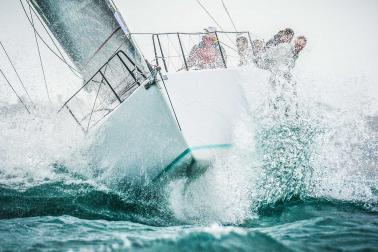
Yachting New Zealand helping New Zealanders access, enjoy and succeed on the water for life
- Boat registration
- Club Manual
- Handicaps- PHRF, IRC, General
- Find somewhere to learn to sail
- Yachting New Zealand shop
- Yachting New Zealand Excellence Awards
- NZL Sailing Foundation Youth Team

Click here for Back Issues of YBQ Magazine
Featured news

Paris 2024: Wilkinson, Dawson win brilliant bronze on dramatic day

Paris 2024: Nervous wait for Wilkinson, Dawson as trio bow out

Paris 2024: Wilkinson, Dawson ready for 'biggest race of lives'

Kiwis on track for 36-year first as conditions wreak havoc

Kiwi multihull crew off to flying start as Saunders eyes big day
Upcoming regattas, elliott 5.9 burnsco traveller series, sub zero series.
Evolution Sails Women's Regatta
New zealand youth match racing championships, e-newsletter sign up, our partners.
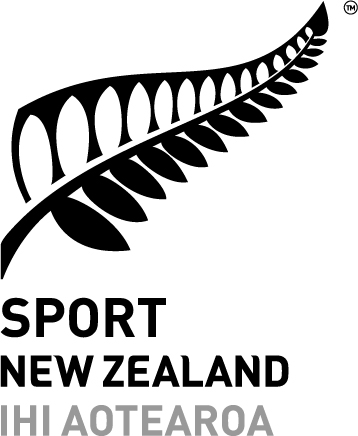
Major Sponsors

Navigation for News Categories
'indescribable' crew errors led to sicily shipwreck, yacht maker says.
By Matteo Negri for Reuters

Divers return to shore in Porticello harbour near Palermo with one of the bodies recovered from the yacht that sank on Monday. Photo: AFP
A series of "indescribable, unreasonable errors" by the crew led to the shipwreck in which British tech entrepreneur Mike Lynch and six others died earlier this week, the yacht manufacturer's chief executive has told Reuters .
The British-flagged Bayesian , a 56-metre-long superyacht with 22 people aboard - 12 passengers and 10 crew - capsized and sank within minutes of being hit by a pre-dawn storm while anchored off the coast of northern Sicily.
"The boat suffered a series of indescribable, unreasonable errors, the impossible happened on that boat ... but it went down because it took on water. From where, the investigators will tell," Giovanni Costantino said in an interview.

The British-flagged Bayesian, a 56-metre-long superyacht with 22 people aboard sank during a storm this week. Photo: VesselFinder
It was also reported he was spoken to for about two hours by Italian investigators.
Earlier this week media, including the BBC and ABC, reported the yacht's captain was James Cutfield who is from New Zealand. He had told local media of the waterspount that engulfed the yacht, saying they "just didn't see it coming."
Costantino helms The Italian Sea Group, which includes Perini Navi, the Italian high-end yacht maker that built the Bayesian in 2008. The vessel has been refitted twice, last in 2020, but not by Perini.
The chief executive ruled out any design or construction errors, which he called unlikely after 16 years of trouble-free navigation, including in more severe weather than on Monday.
He blamed the Bayesian 's crew for the "incredible mistake" of not being prepared for the storm, which had been announced in shipping forecasts.
"This is the mistake that cries out for vengeance," he said.
Costantino said passengers should have been summoned out of their cabins and assembled at a point of safety while the boat was being prepared for the storm by pulling up the anchor, closing doors and hatches, lowering the keel to increase stability and other measures.
Six out of 12 passengers died in the shipwreck, and five bodies were found inside the wreck. Emergency services are still trying to locate the body of the last missing person, Lynch's daughter Hannah.
Had correct procedures been followed, all passengers would have gone back to sleep after one hour "and the next morning they would have happily resumed their wonderful cruise," Costantino said.
Another yacht anchored near the Bayesian escaped unharmed. The captain of the sunken yacht and other crew members have not commented publicly on the disaster, while Italian prosecutors investigating it are due to hold a press conference on Saturday.
Reuters / RNZ
Copyright © 2024 , Radio New Zealand
Related Stories
Body of uk tech entrepreneur removed from sunken yacht.

Italian officials confirm Mike Lynch's body has been retrieved and his teenage daughter is the last person to remain missing.
Kiwi named as captain of yacht sunk in storm

James Catfield told a local paper the crew didn't see the waterspout coming.
Four bodies pulled from billionaire's sunken yacht

The identities of the four have not been released. Six people were missing after the yacht sank near Sicily. Audio
- Australian transgender woman wins landmark case against female-only app
- Death penalty not solution to Fiji's drugs problem - human rights chair
- Kamala Harris caps convention with call to end Gaza war, fight tyranny
Get the RNZ app
for ad-free news and current affairs

Top News stories
- Aratere report 'highlights potential gaps,' shows need for agency preparation
- Waiheke Island facing 'most acute housing crisis of anywhere in New Zealand'
- Live NRL updates: Warriors v Bulldogs round 25 and Shaun Johnson retirement
- Philip Polkinghorne online searched strangulation the day after his wife's death, court hears
- Transport Agency decides not to install rest of median barrier on SH2 after backlash
Follow RNZ News

- Today's news
- Reviews and deals
- Climate change
- 2024 election
- Newsletters
- Fall allergies
- Health news
- Mental health
- Sexual health
- Family health
- So mini ways
- Unapologetically
- Buying guides
Entertainment
- How to Watch
- My watchlist
- Stock market
- Biden economy
- Personal finance
- Stocks: most active
- Stocks: gainers
- Stocks: losers
- Trending tickers
- World indices
- US Treasury bonds
- Top mutual funds
- Highest open interest
- Highest implied volatility
- Currency converter
- Basic materials
- Communication services
- Consumer cyclical
- Consumer defensive
- Financial services
- Industrials
- Real estate
- Mutual funds
- Credit cards
- Balance transfer cards
- Cash back cards
- Rewards cards
- Travel cards
- Online checking
- High-yield savings
- Money market
- Home equity loan
- Personal loans
- Student loans
- Options pit
- Fantasy football
- Pro Pick 'Em
- College Pick 'Em
- Fantasy baseball
- Fantasy hockey
- Fantasy basketball
- Download the app
- Daily fantasy
- Scores and schedules
- GameChannel
- World Baseball Classic
- Premier League
- CONCACAF League
- Champions League
- Motorsports
- Horse racing
New on Yahoo
- Privacy Dashboard
I lived ‘Below Deck’ on a luxury yacht — here’s what you need to know
Tahiti, St. Thomas and the French Riviera — I’ve yachted in all of these exotic locales, albeit from the comfort of my couch. And, millions of Americans are in the same boat.
In 2013, “Below Deck,” introduced the masses to the most glamorous mode of traveling: yachting. Since then, it’s become a Bravo mainstay with Season 9 of “Below Deck Mediterranean’’ premiering in June.
But how real is the reality show? I spent five nights on a yacht in Croatia to find out.
A tip on tipping
My suitcase wasn’t bursting with Benjamins. An agency at your final destination provides cash for the crew’s tip money. While you’re expected to tip $30,000 for a two-night cruise on “Below Deck,” in real life you only have to tip 10% to 15% of your charter fee. That’s about $10,000 for a two-night cruise on a 180-foot charter yacht like Mustique (from $250,000 a week), which stars in the new season.
According to Zvonimir Androi, president of the yacht charter company Via Croatia, more often than not, the tip comes from what’s left over after provisioning.
So, shun the Dom Pérignon and skip the beluga caviar, and you’ll have money to spare.
What’s up, dock?
In real life, “Below Deck’s” favorite commercial-break cliff-hanger isn’t nearly as dramatic. Docking in our yacht, Via Croatia’s five-cabin, 100-foot Adriatic Escape (from $52,800 a week), was breezy.
I asked the crew if they hated setting up the slide — a tortuous, Herculean task if you believe what you see on TV.
“It’s not that bad,” a twentysomething Croatian deckhand, as cute as his on-screen counterparts, told me. “That said, we’re definitely not sad if you don’t ask for it.”
Play it cool
Despite being served meat on more than one occasion, my vegetarian co-guests on board weren’t divas when it came to cuisine — a major source of chef-related stress on the show.
Tantrums aren’t the norm Barbie Pascual, the “Below Deck” stewardess famous for putting up with former “RHONY” star Jill Zarin’s demands for the perfect Diet Coke in the “Real Housewives of Grenada” episode, tells me. “Guests know they are being filmed so their reactions are more extreme than they’d be if the cameras weren’t around,” she says.
Pascual’s biggest tip for first-time yachters? Don’t go skinny dipping, like they do on the show, after dark.
“People forget about currents, sharks, etc.,” she says. “Jumping in the water should always be with the captain’s consent!”
Our humorless Croatian yacht captain was a far cry from “Below Deck Mediterranean’s” affable Captain Sandy Yawn. I think we only saw him twice over the course of four days, and he definitely didn’t join us for dinner.
That was fine by us because the stews and deckhands were always handy with anything we needed — including at chat.
Asking for it
“No” is a word you’ll never hear on a yacht, unless there is a safety issue, Pascual says.
While we didn’t ask our crew to do a striptease or decorate for ‘70s night (two recurring requests on the show), out-there demands aren’t out of the question, as long as you’re willing to pay for it.
For example, Via Croatia is currently retrofitting one of its multimillion-dollar superyachts for an upcoming charter booked by a multigenerational Jewish family from Florida.
“In addition to paying the charter fee, the client is literally buying everything new: pots, pans, silverware, etc.” said Androi. “They’re even spending $30,000 on a new tender for the elderly mother-in-law.”
Now, I’m no reality show producer, but a picky primary trying to keep his wife, her elderly mom and their kosher kids happy at sea has the makings of an Emmy Award-winning episode.
Yachting on a budget
Charters are cheapest at the beginning and end of a destination’s season. Via Croatia’s yuppiest yacht, the 160-foot, 12-cabin Agape Rose , fetches $200,000 a week in July and August. But it’s just $164,000 a week in April and October. Divide that by 24 of your closest friends and family and it’s just $6,800 a person.
If that’s still too much, consider booking a yacht club suite on one of MSC Cruises ’ Mediterranean voyages.
Sure, you’ll be on a cruise liner, but for $1,659 a person you’ll be treated to seven nights of private butler service with a private pool and restaurant that the pleb passengers don’t even know exists.
Recommended Stories
Rick springfield is 75 but says he feels like he’s still in his late 30s: 6 lessons we can all learn from him..
The "Jessie's Girl" singer hit a milestone birthday on Aug. 23 — and shows no signs of slowing down.
360 One lifts its valuation of India's National Stock Exchange to $29.9B
360 One Asset, an investor in India's National Stock Exchange (NSE), has increased its valuation for the stock exchange to $29.9 billion, significantly higher than the $18 billion to $19 billion price tag the firm was valued at in private transactions last year. The wealth manager, which invested in NSE through its SOF8 fund, disclosed its assessment of its stake in the NSE in an update to its investors in June that was reviewed by TechCrunch. The mark up in valuation reflects the growing confidence in India's economic prospects and a surge in public listings in the country.
Cruise's self-driving cabs are coming to Uber next year
Uber and Cruise have reached a deal that would add driverless vehicles to the ride sharing giant's fleet of vehicles.
Women's pain and discomfort has a history of being ignored in health care. Here are two ways that's starting to change.
Women disproportionately experiencing pain in health care settings is nothing new. Here's some of the history behind it — and what women can do.
Heat alert! We heat check our hottest fantasy hot takes | Yahoo Fantasy Forecast
'Convictions Week' ends with an absolute banger of a pod. If there is one thing hotter than the weather in August, it's Dalton Del Don's preseason hot takes. Andy Behrens does his best to heat check Del Don on his 7 most polarizing fantasy takes.
5 things to do if you can’t pay your credit card bill
Take these actions before you miss a credit card payment to keep your account — and credit score — in good standing.
Little League World Series down to 4 teams as Venezuela, Florida survive elimination bracket
It'll be Florida vs. Texas and Venezuela vs. Chinese Taipei in Williamsport.
Cruise’s robotaxis are coming to the Uber app in 2025
Cruise, General Motors’ self-driving subsidiary, said it has signed a multi-year partnership with ride-hailing giant Uber to bring its robotaxis to the ride-hailing platform in 2025. The announcement provides another indicator that Cruise is preparing to reintroduce its robotaxis to public roads after one struck a pedestrian last October. Waymo vehicles have been available on the Uber app in Phoenix since October 2023.
Here’s why online banks offer the highest savings interest rates
If you’re looking for the best savings interest rates, you’ve probably noticed that most are offered by online banks. So how are online banks able to pay such high rates? Here’s the answer.
NFL rookies Jayden Daniels, Malik Nabers received 'multiple education training sessions' after calling off $10K bet
The former LSU teammates had to quickly call off a bet over which one would win Offensive Rookie of the Year.

IMAGES
COMMENTS
Approx. 20. FINANCE. Company status. Incorporated Company. Yachting New Zealand is recognised by World Sailing [2] as the governing body for the sport of sailing in New Zealand. Yachting New Zealand also facilitates training in sailing in and around the country. [3]
Sir Peter James Blake KBE (1 October 1948 - 5 December 2001) was a New Zealand yachtsman who won the 1989-1990 Whitbread Round the World Race, held the Jules Verne Trophy from 1994 to 1997 by setting the around the world sailing record as co-skipper of ENZA New Zealand along with Sir Robin Knox-Johnston, and led New Zealand to successive victories in the America's Cup.
The international success of our early 1900 designs and the quality and durability of the world-famous Kauri timber, coupled with the unique style of construction was world leading at the time and is today still internationally recognized for that. ... The Royal New Zealand Yacht Squadron (RNZYS), the traditional home of the old keeler's up ...
Finn, AC45. Medal record. Sailing. Representing New Zealand. Olympic Games. 1984 Los Angeles. Finn class. Sir Russell Coutts KNZM CBE (born 1 March 1962) is a world champion New Zealand yachtsman. He won an Olympic gold medal and skippered three Americas Cup victories in 1995, 2000, and 2003.
Further north, The Bay of Islands is traditionally New Zealand's yachting centre, boasting an extraordinary protected bay and hundreds of secluded islands offering the perfect secluded escape. ... from cycling and canoeing to walking and four-wheel driving. Inland on the South Island is the famous adventure capital of Queenstown, offering a ...
The Auckland Yacht Club, formed in 1871, became the New Zealand Yacht Squadron in 1901 and gained a royal charter in 1902. The North Shore Sailing Club, begun in 1895, shifted to the waterfront, becoming the Akarana Yacht Club in 1922 and gaining its royal charter in 1937. The Ponsonby Cruising Club, that working-class bastion, started in 1900.
Our mission at NZ Boat Encyclopedia is to create an online community driven archive of NZ boats and boating stories. Each week we add new boats to the sit so make sure to check in regularly to discover our latest articles. Find Out More. For a small country NZ has a long history of innovative yacht design for both racing and cruising.
WRIGHTY my world, my boats, and eighty years is the autobiographical story of Alan Wright, New Zealand's most popular keelboat designer. The book begins with Alan Wright's childhood years in Auckland and then on the family farm at Ngatea, building tin canoes, sailing P Class on the Piako River, his boatbuilding apprenticeship at the Naval Dockyard and his experiences in Australia and Papua ...
Windsurfing is a mixture of sailing, surfing and skiing. The first New Zealand windsurfer was built in 1975. Kiwi men and women, including Bruce and Barbara Kendall, have been international medal-winners. There are a number windsurfing clubs around the country. One of the main racing events is the slalom nationals, which is hosted by a ...
NZL Sailing Team. New Zealand sailors have a proud tradition of success at the Olympics, highlighted by the record-equalling four medals won at the 2016 Rio Olympics. The high performance programme continually evolves and the focus now is on winning medals at the 2024 Paris Olympics. The NZL Sailing Team is made up of the best Olympic class ...
New Zealand's oceans have more coastline than the continental United States, so there's plenty to see and do. By sailing along the water, you might get a distinct perspective of the surreal panorama. New Zealand is a place that is tailor-made for spectacular sailing adventures, with sheltered sounds, bays filled with islands, and more than 9,320 miles of coastline. Secluded anchorages and ...
Here is a suggested route for your New Zealand yacht adventure: Day 1 - Auckland to Waiheke. On the first day of your trip, your luxury charter yacht will be waiting for you in Auckland. After exploring the city and its attractions, you will head to the island of Waiheke, famous for its wineries.
13 May 1995. New Zealand wins the America's Cup. Few New Zealanders in 1995 could have avoided television commentator Peter Montgomery's famous line, 'the America's Cup is now New Zealand's cup!'. Read more... 23 January 1951. Tragic centennial yacht race begins. Twenty yachts left Wellington for Lyttelton in a race to celebrate ...
6 Places to Visit on a New Zealand yacht charter: Auckland. Waiheke Island. Coromandel Peninsula. Great Barrier Island. Poor Knights Islands Marine Reserve. Bay of Islands. However you wish to to spend your vacation, be rest assured that the North Island has it all. Read on to discover the six best places to visit while exploring by superyacht.
Sir Bernard Fergusson Trophy for Overall Sailor of the Year. 2023 George Gautrey. 2022 Thomas Saunders. 2021 Emirates Team New Zealand. 2020 Josh Junior. 2019 Dan Slater. 2018 Daryl Wislang and Stu Bannatyne (Dongfeng Race Team); and Honda Marine. 2017 Emirates Team New Zealand. Yachting Excellence Awards - Sailor of the Year.
Sailing has appeared at every Olympiad since (except Moscow 1980, when the Games were boycotted) - 16 Olympiads. Sailing is one of New Zealand's most successful Olympic sports with 23 medals. The first New Zealand sailors competed at Melbourne 1956. • Jack Cropp OLY#80 and Peter Mander OLY#107 in the Sharpie.
We tracked down some of history's most iconic boats that are still sailing today. Suhaili. Suhaili and Joshua meet for the first time in 50 years at the 2018 Golden Globe Race. Photo courtesy of Christophe Favreau/PPL/GGR. Sir Robin Knox-Johnston's 32ft ketch, Suhaili, is one of the most famous small sailboats in the world.
Tumlaren - 28 ft Knud Reimers 1936 design. Posted 9 months ago. A recently fully renovated Knud Reimers 1936 designed 28' Tumlaren. Built in Auckland in the 1950s this beautiful double ended kauri hulled yacht had a... Yachts / Bay of Islands and Northland.
Discover New Zealand's Breathtaking Coastlines, Pristine Lakes, and Iconic Fjords. New Zealand is a dream destination for boating enthusiasts, with its stunning coastline, pristine islands, and diverse marine life. Whether you want to sail around the scenic bays, cruise to the remote fjords, or charter a luxury yacht for a special occasion, you ...
Team New Zealand or TNZ is a sailing team based in Auckland, New Zealand representing the Royal New Zealand Yacht Squadron.. Team New Zealand became a household name in their home country following their consecutive wins in the America's Cup in 1995 and 2000, under the leadership of Sir Peter Blake, when becoming the first team from a country outside the United States to win and successfully ...
rank #6 ·. Albert Leslie Willetts (22 February 1900 - 23 May 1979) was a notable New Zealand yacht designer, builder and racer. Along with his brother, William Willetts, he won numerous yachting trophies in New Zealand during the 1920s and 1930s. Tom Schnackenberg New Zealand sailor and yacht designer.
New Zealand citizen James Cutfield, 51, ... Also aboard the yacht were Kiwi Ayla Ronald, 36, a senior associate for Clifford Chance in London, and her partner Matthew Fletcher. They were among the ...
In the high-octane, highly competitive world of professional sailing, few names resonate as powerfully as Peter Burling. As the skipper of Emirates Team New Zealand in the 2024 America's Cup ...
Also aboard the yacht were Kiwi Ayla Ronald, 36, a senior associate for Clifford Chance in London, and her partner Matthew Fletcher. They were among the 15 people who were rescued, along with ...
Mike Lynch has been confirmed dead by search and rescue authorities after his yacht sank off the coast of Sicily during a violent storm. Photo / Getty Images The body of British tech magnate Mike ...
Yachting New Zealand helping New Zealanders access, enjoy and succeed on the water for life. Boat registration. Club Manual. Handicaps- PHRF, IRC, General. Find somewhere to learn to sail. News. Clubs. Yachting New Zealand shop. Yachting New Zealand Excellence Awards.
A series of "indescribable, unreasonable errors" by the crew led to the shipwreck in which British tech entrepreneur Mike Lynch and six others died earlier this week, the yacht manufacturer's chief executive has told Reuters .. The British-flagged Bayesian, a 56-metre-long superyacht with 22 people aboard - 12 passengers and 10 crew - capsized and sank within minutes of being hit by a pre-dawn ...
In real life, "Below Deck's" favorite commercial-break cliff-hanger isn't nearly as dramatic. Docking in our yacht, Via Croatia's five-cabin, 100-foot Adriatic Escape (from $52,800 a ...
The Bayesian is a luxury yacht built by Italian shipbuilders Perini Navi in 2008, designed with luxury interiors and six bedroom suites on board. It measures 56m (184ft) long and sports a 72m ...
The yacht was carrying 10 crew members and 12 passengers when it capsized. Several boats were seen leaving the port of Porticello and heading to the site of the sinking just before 3.30pm local ...